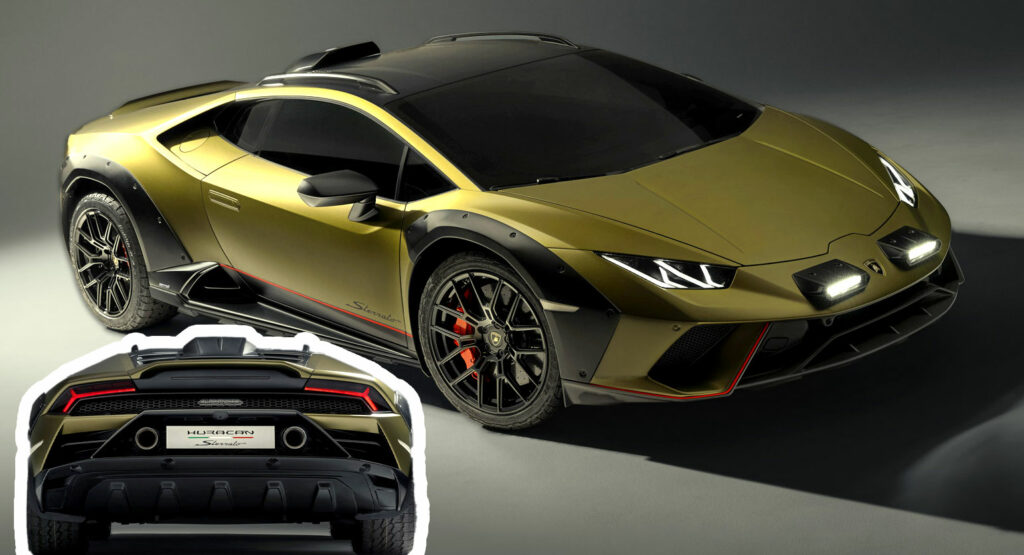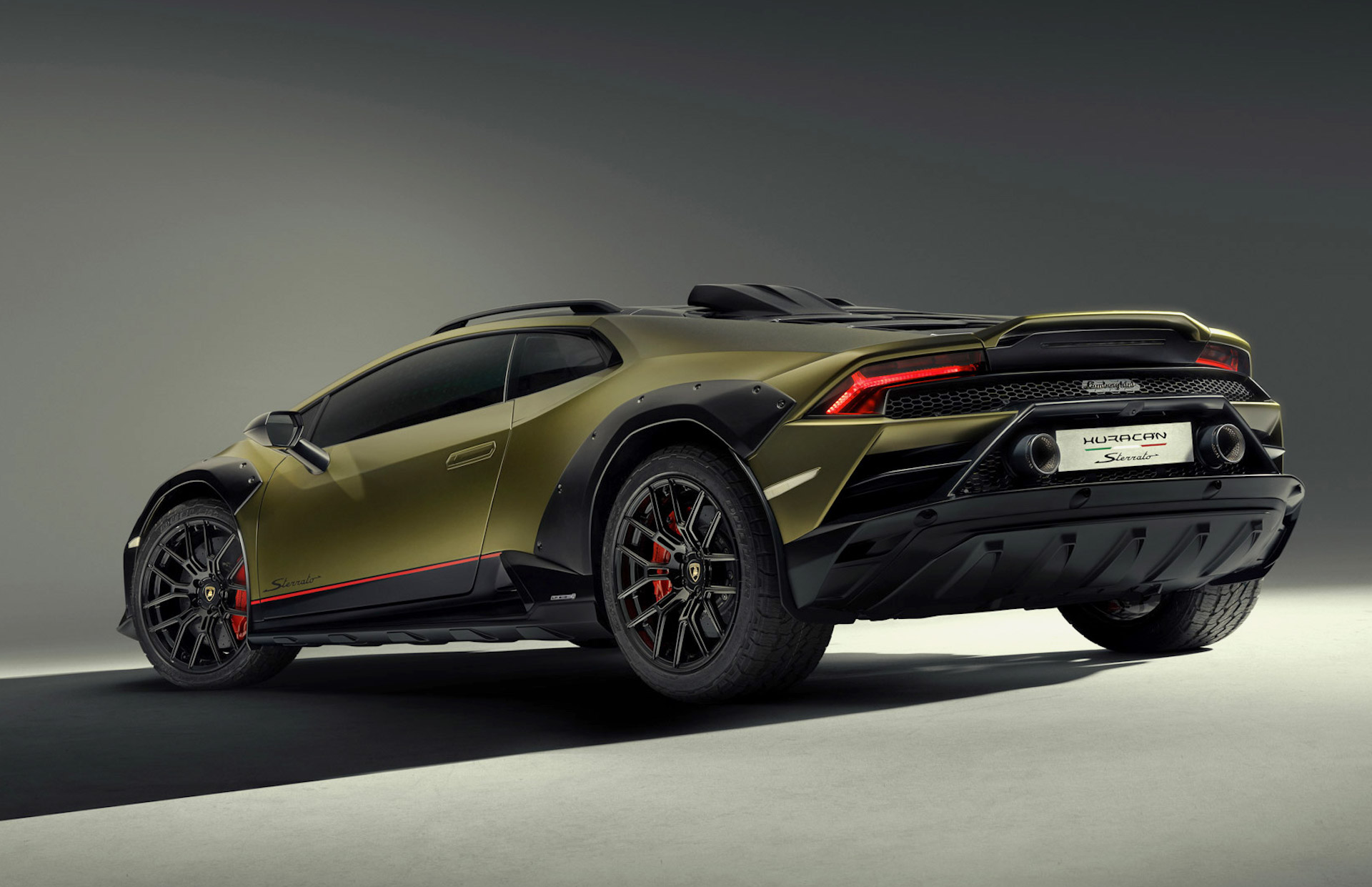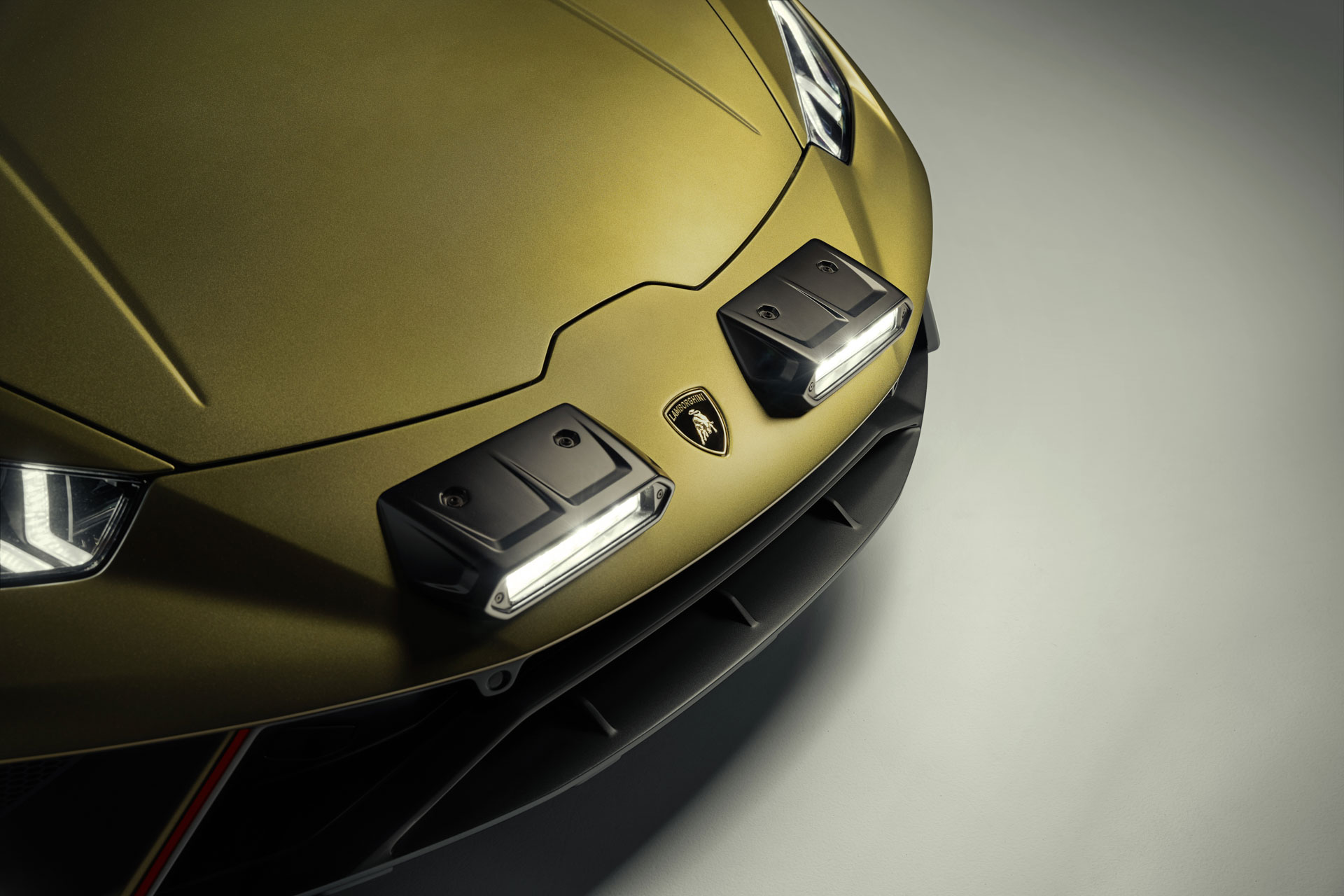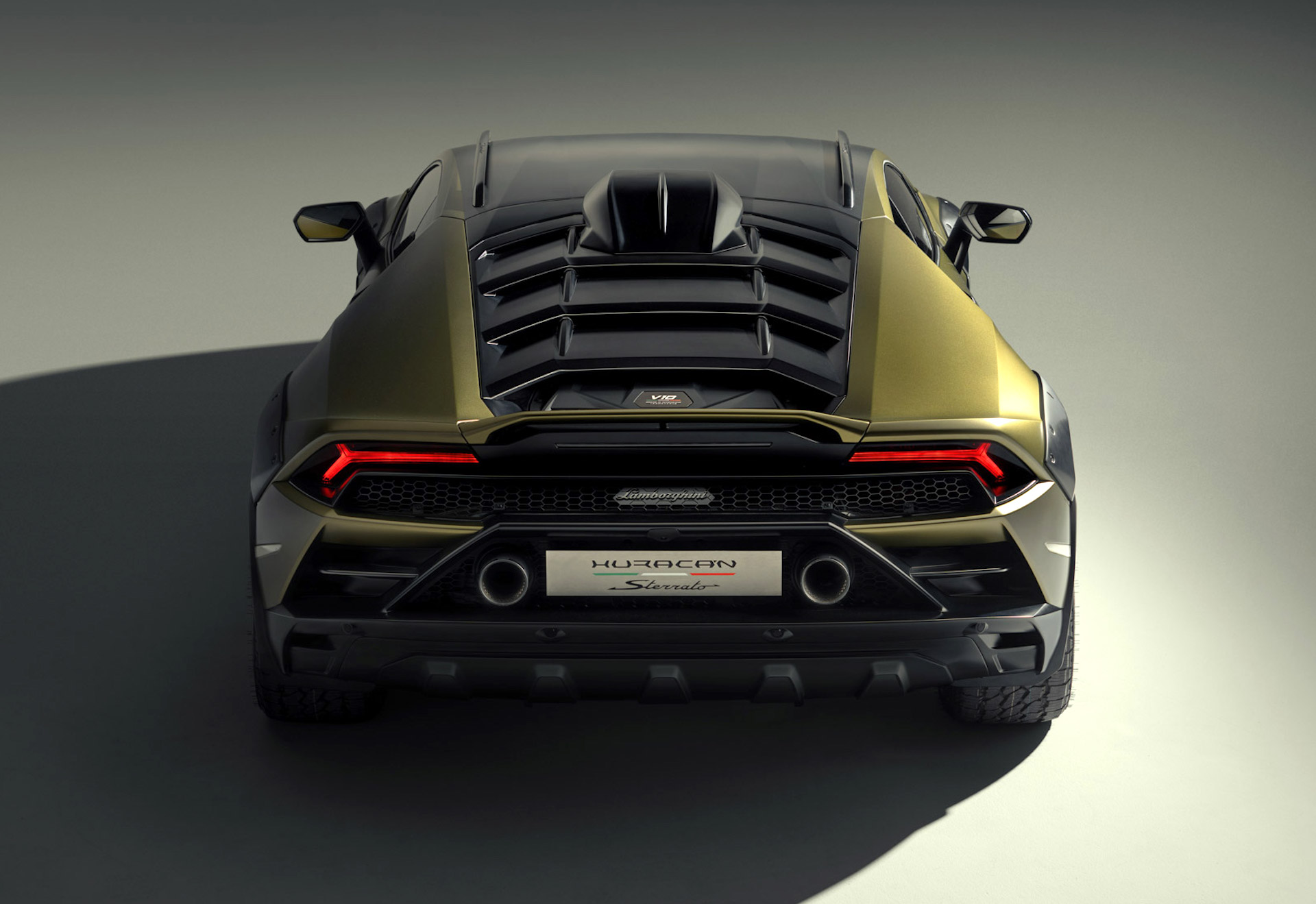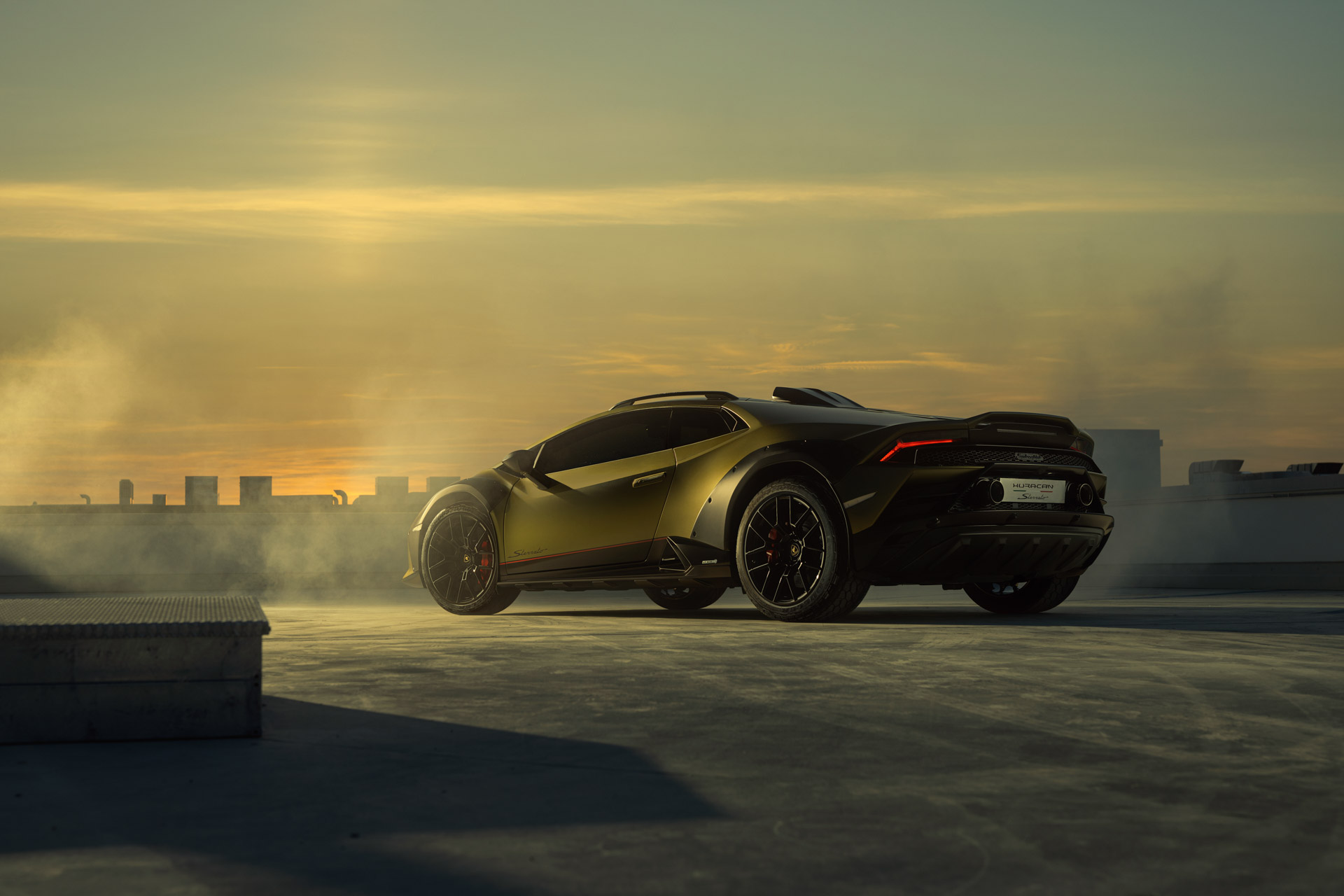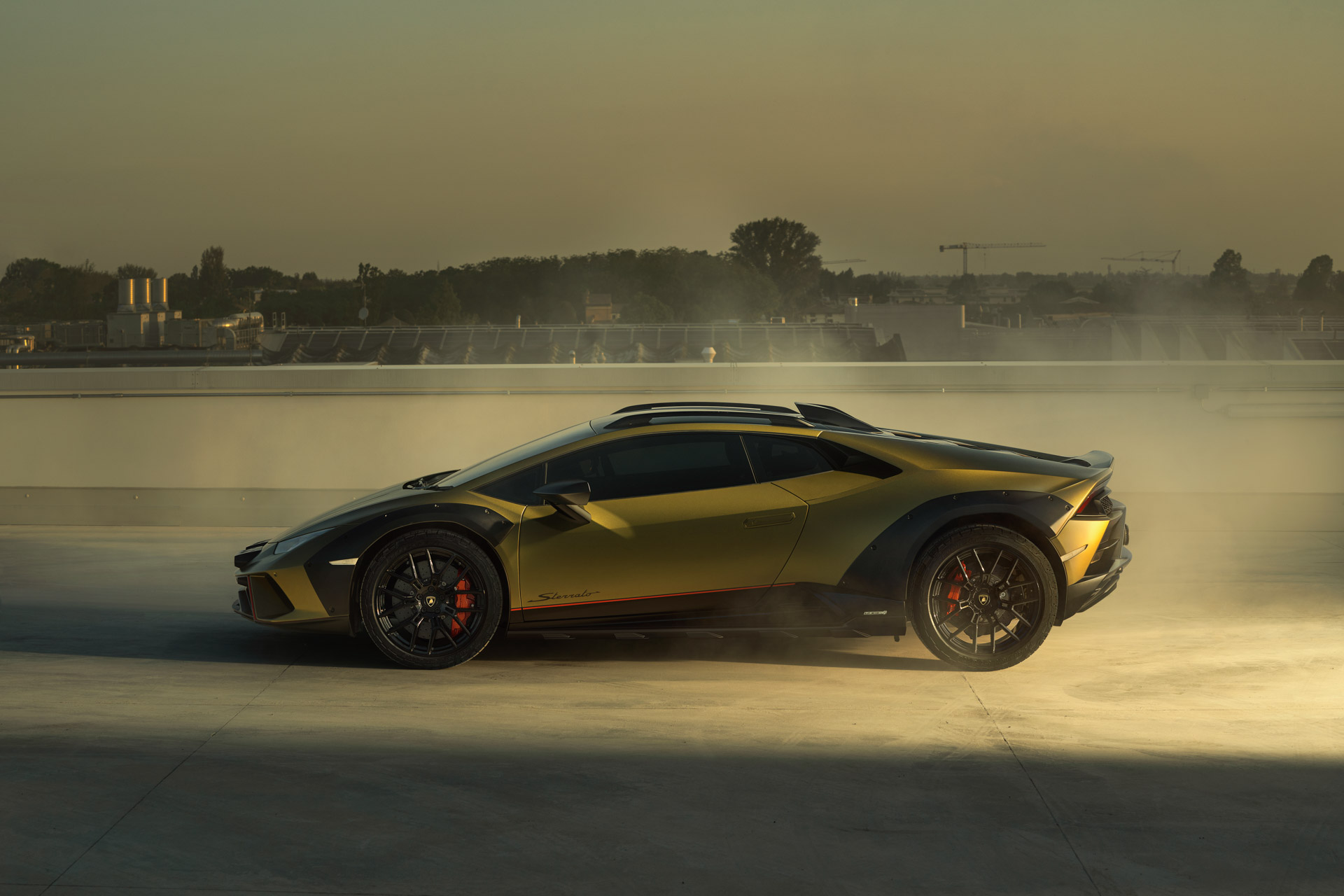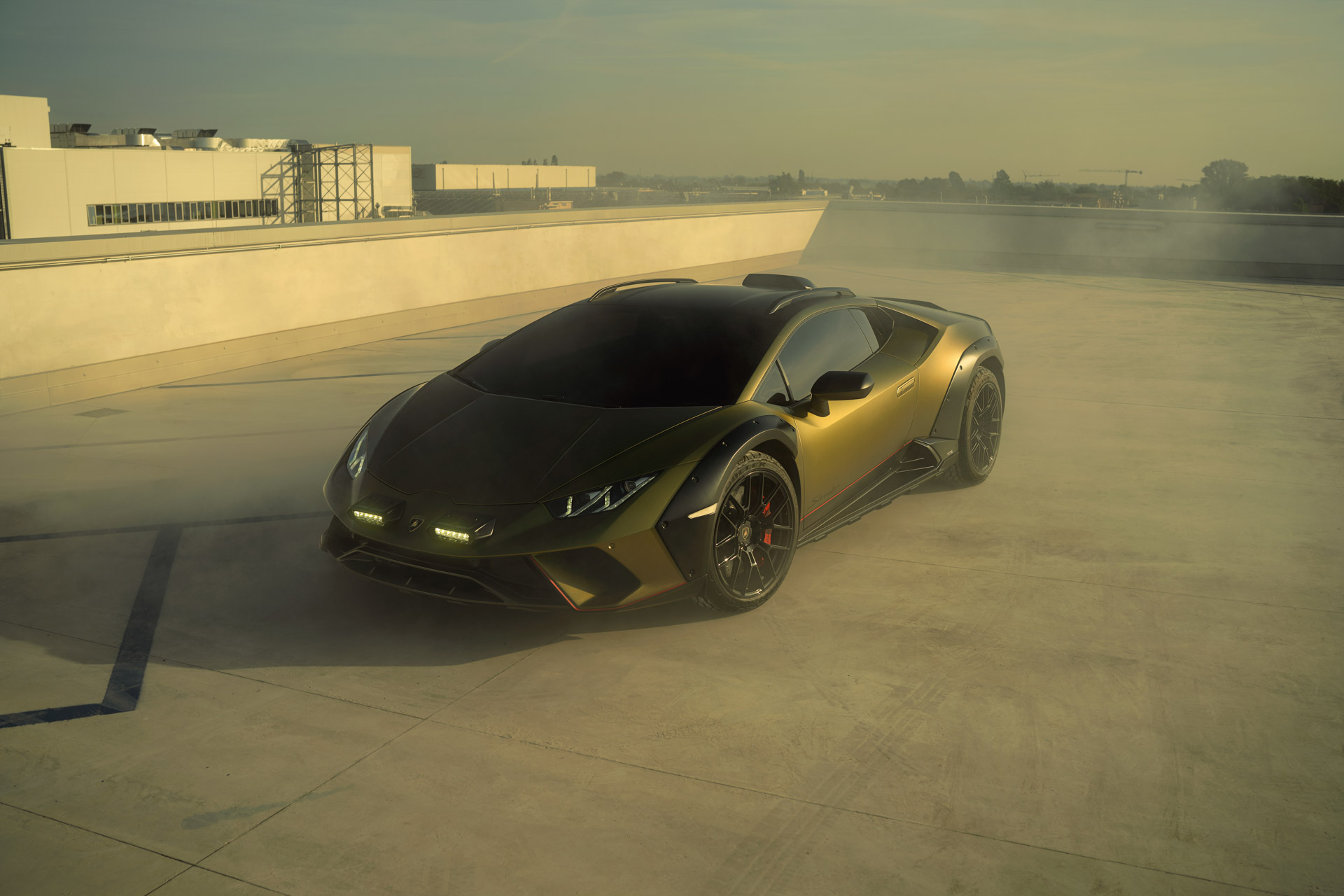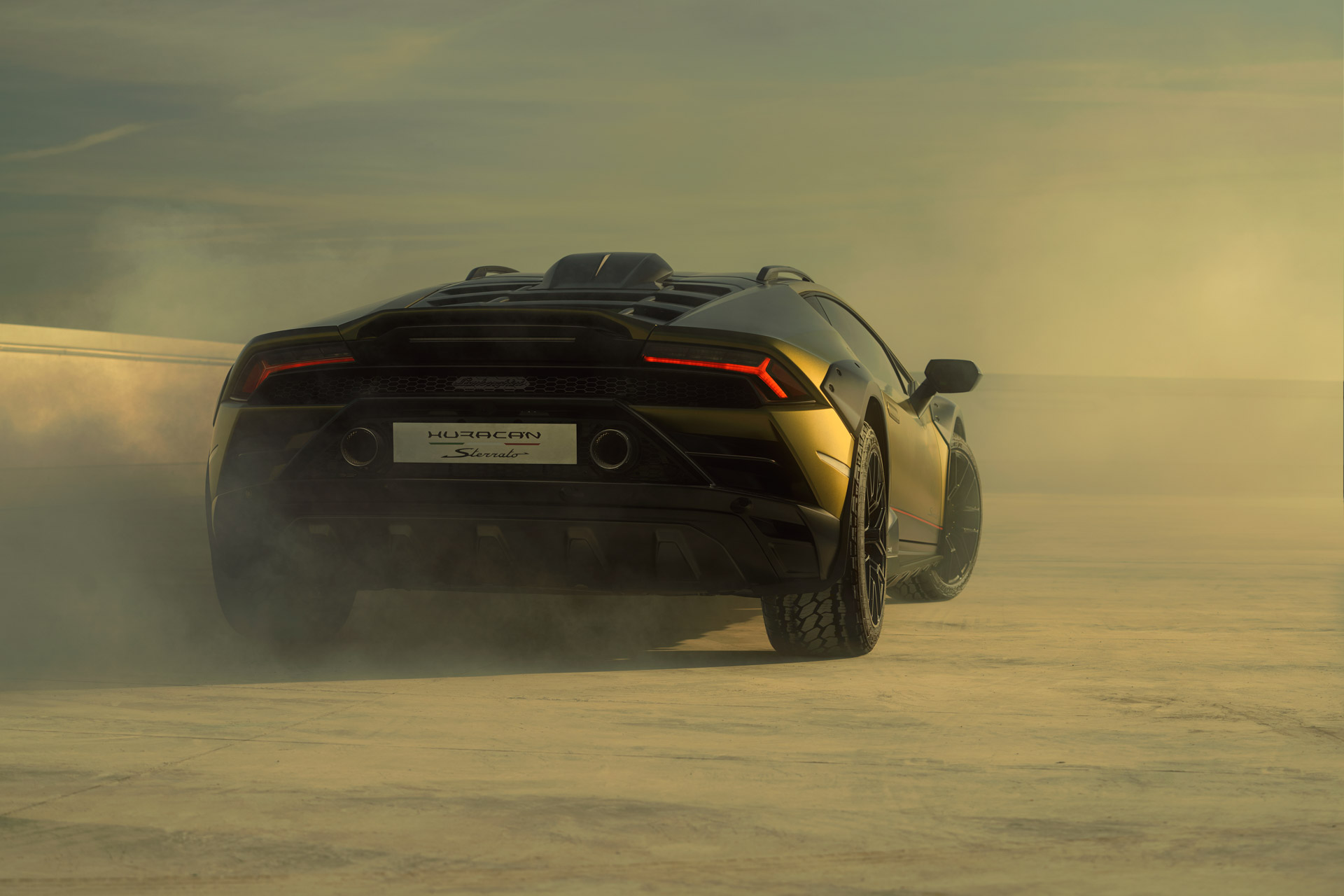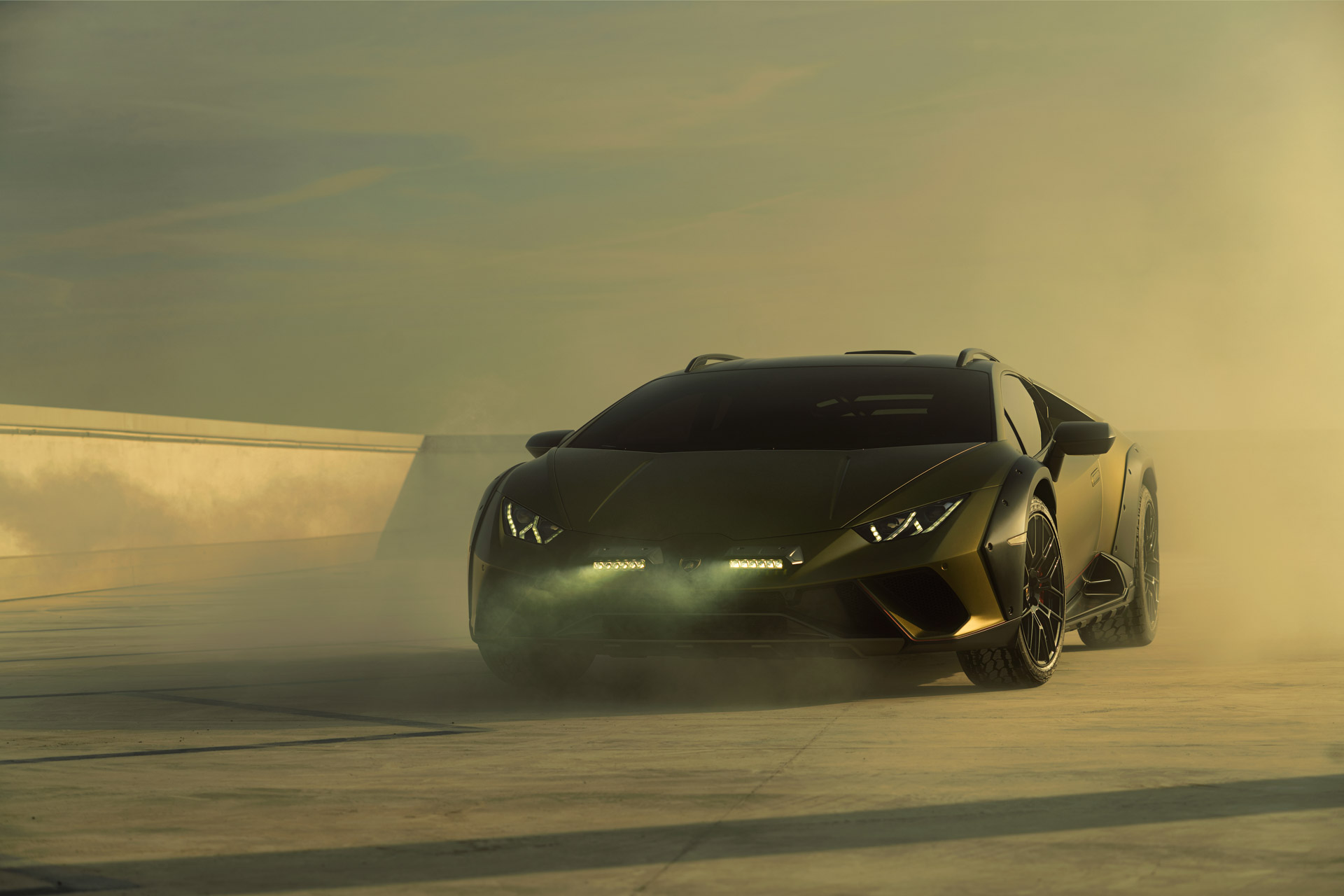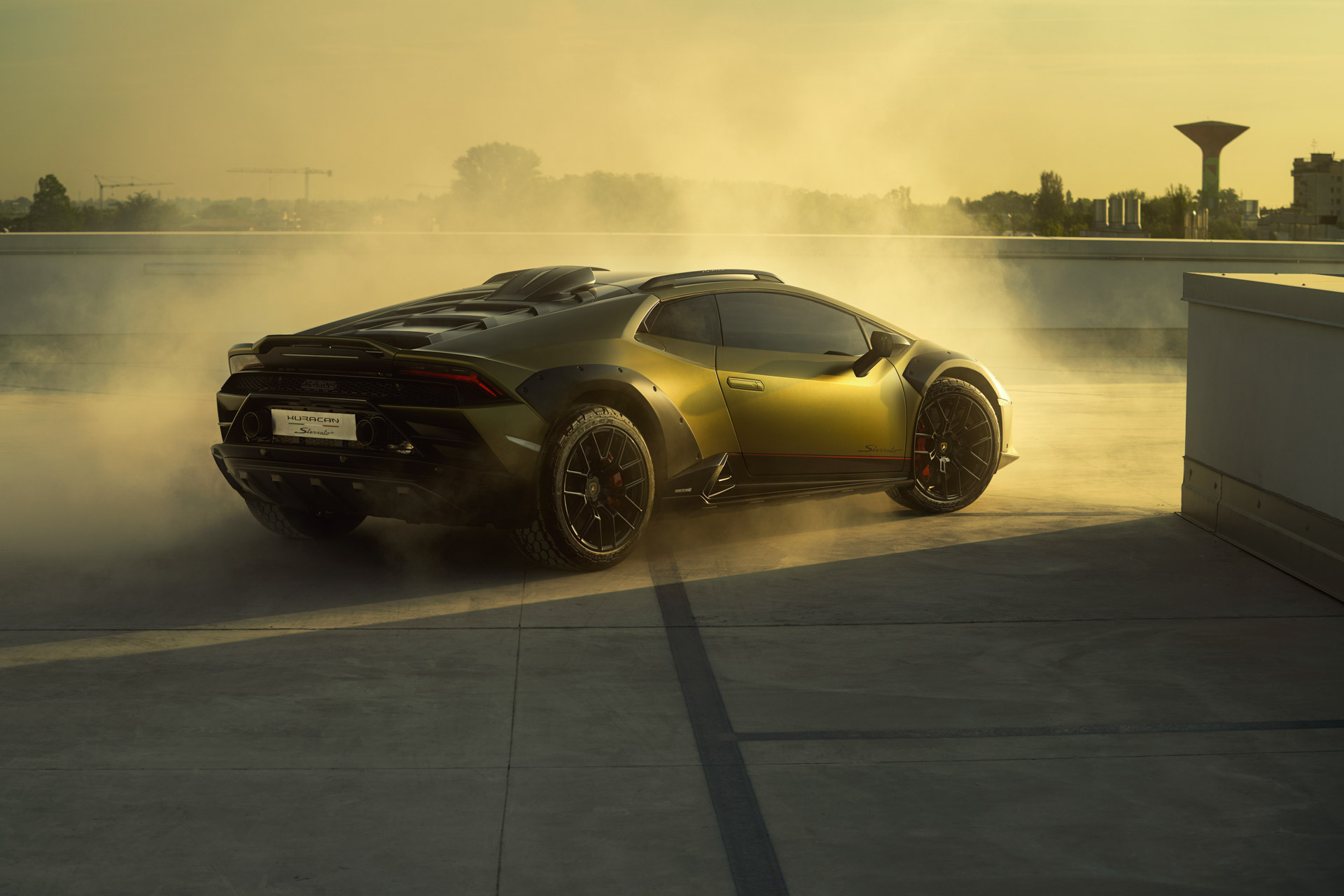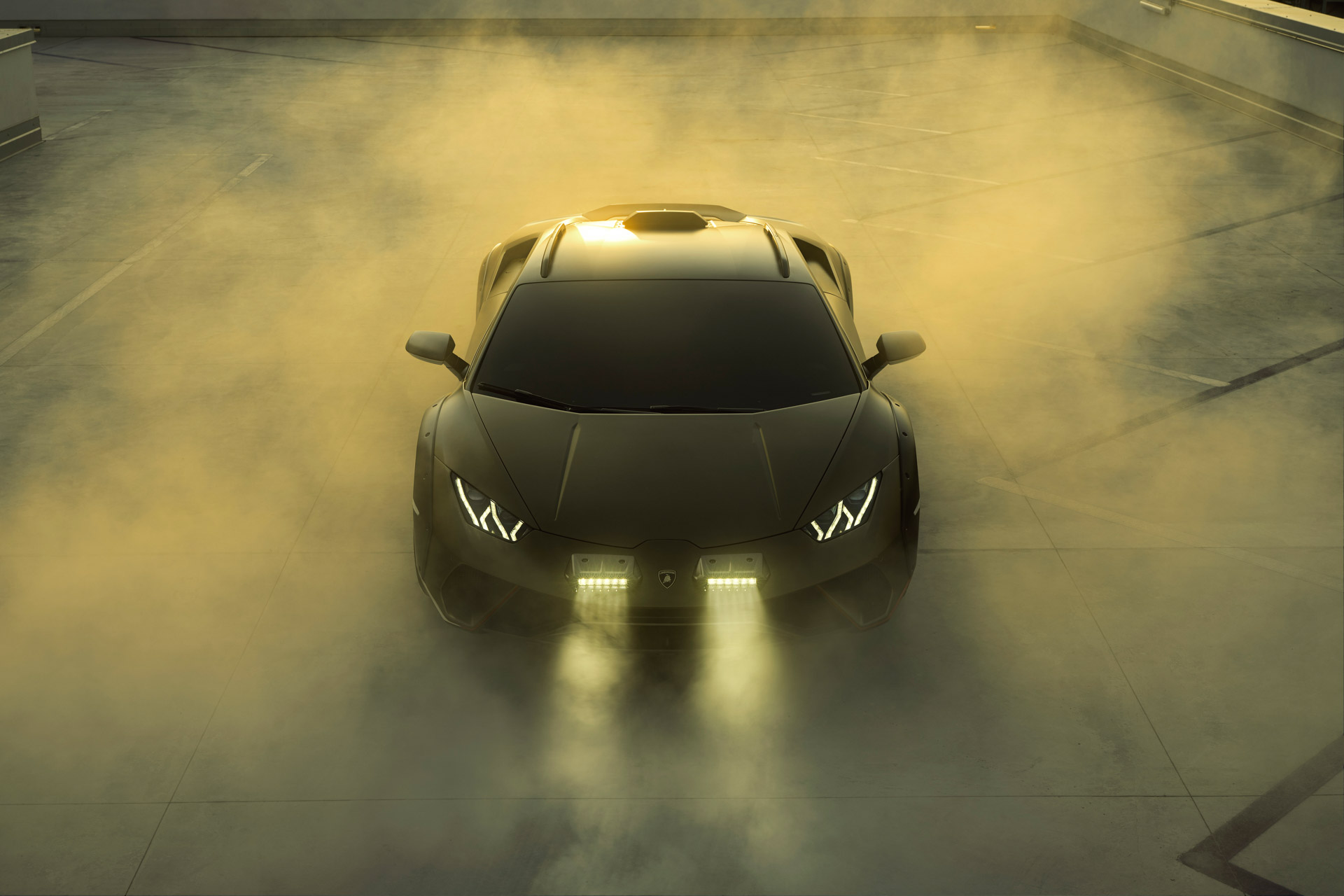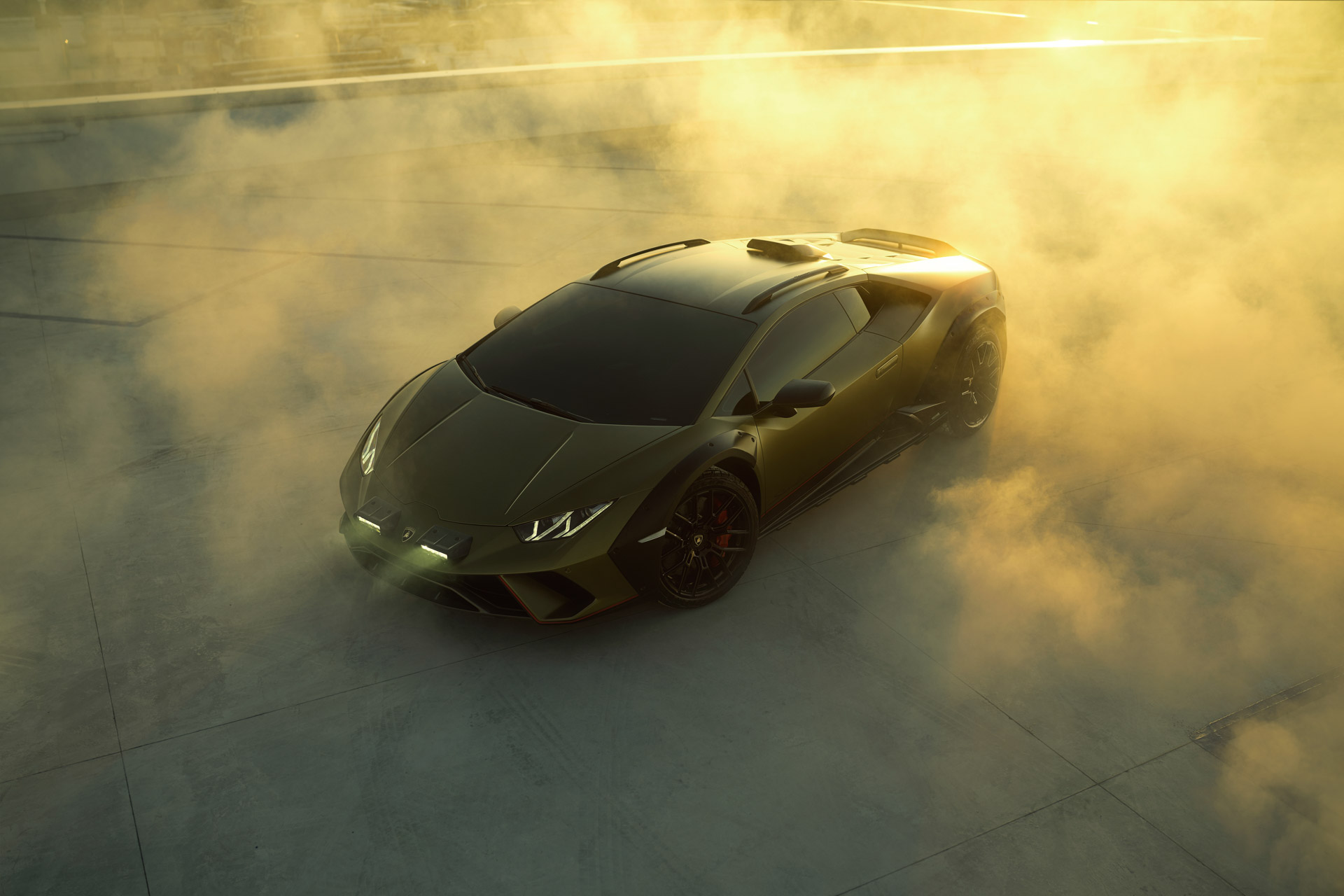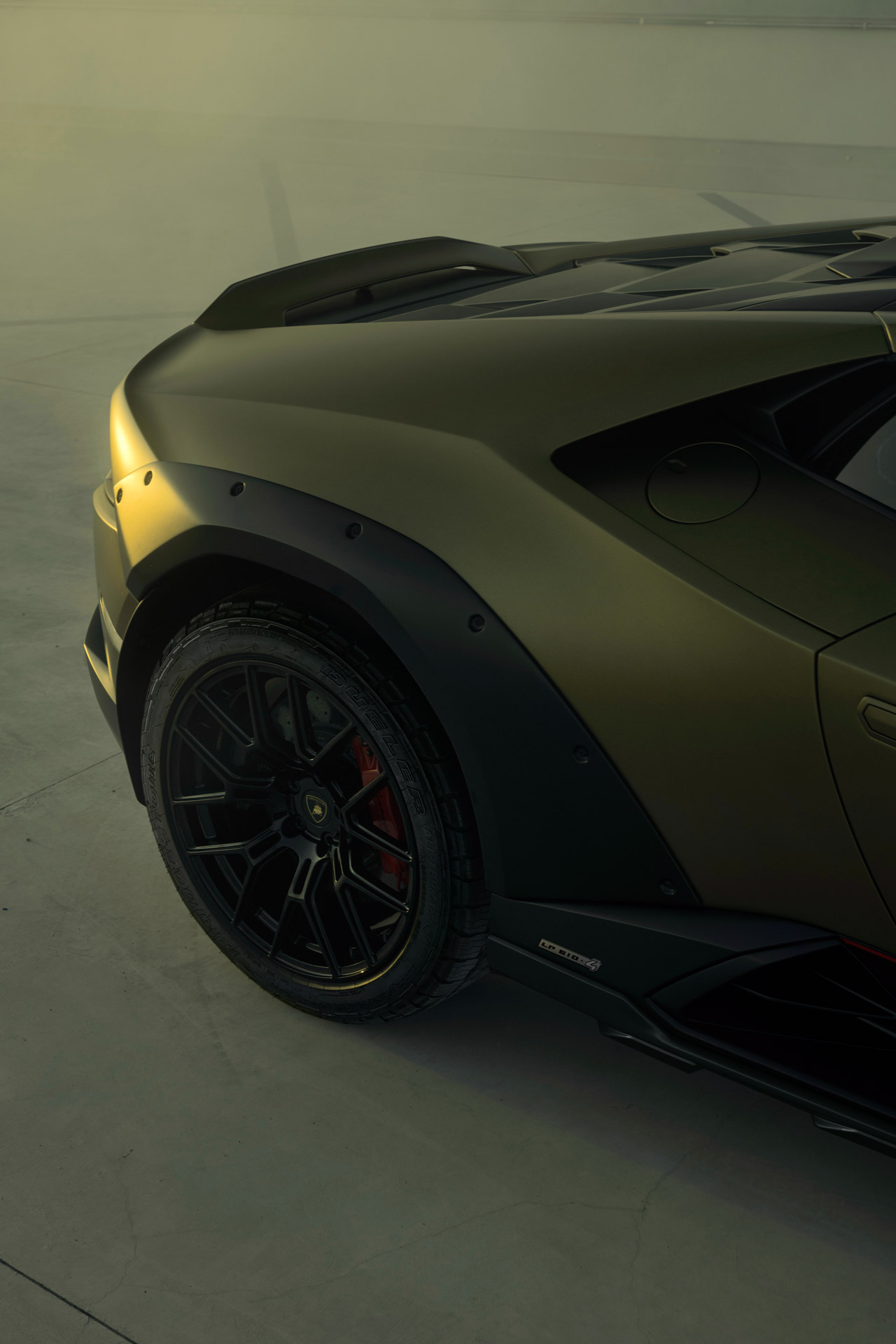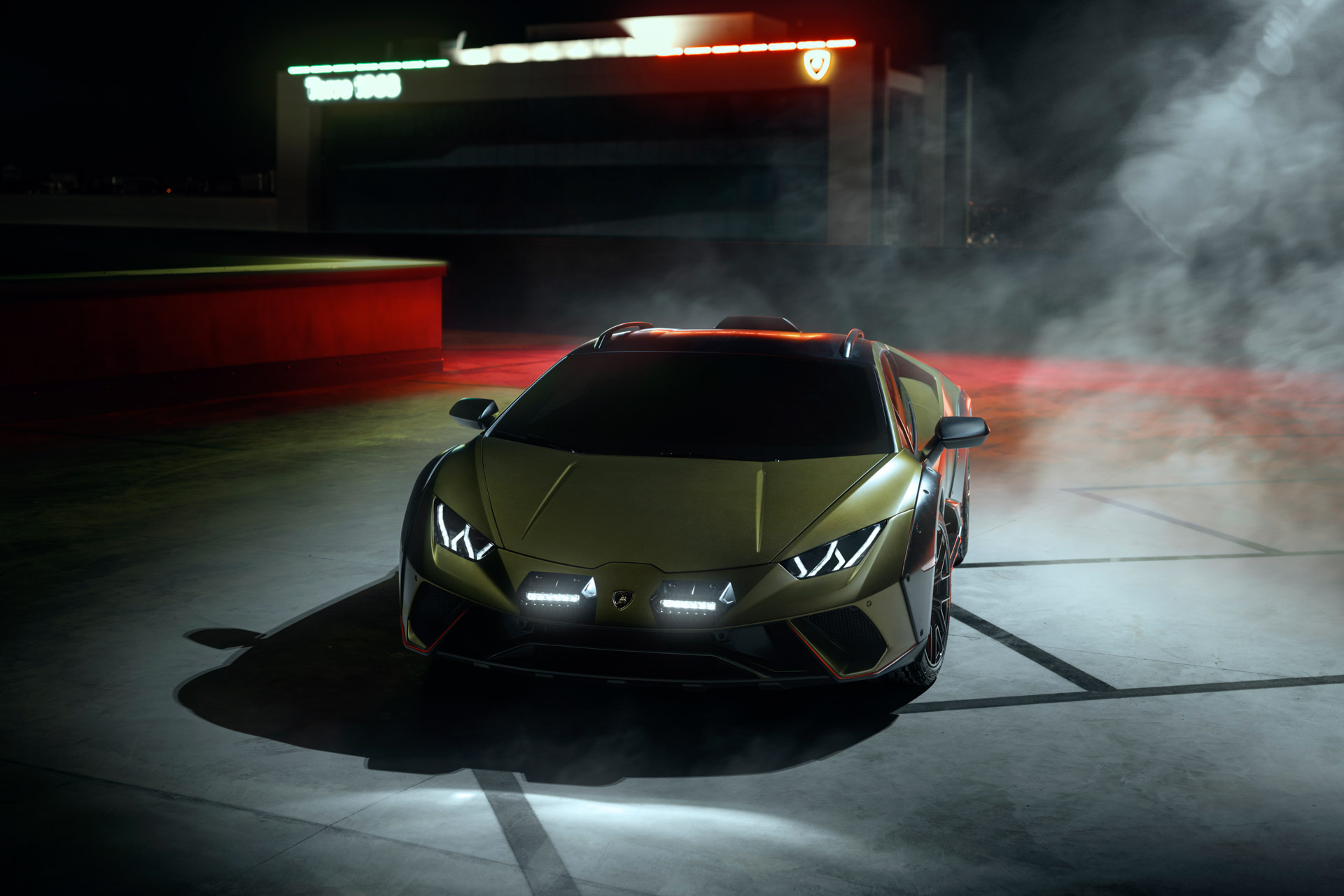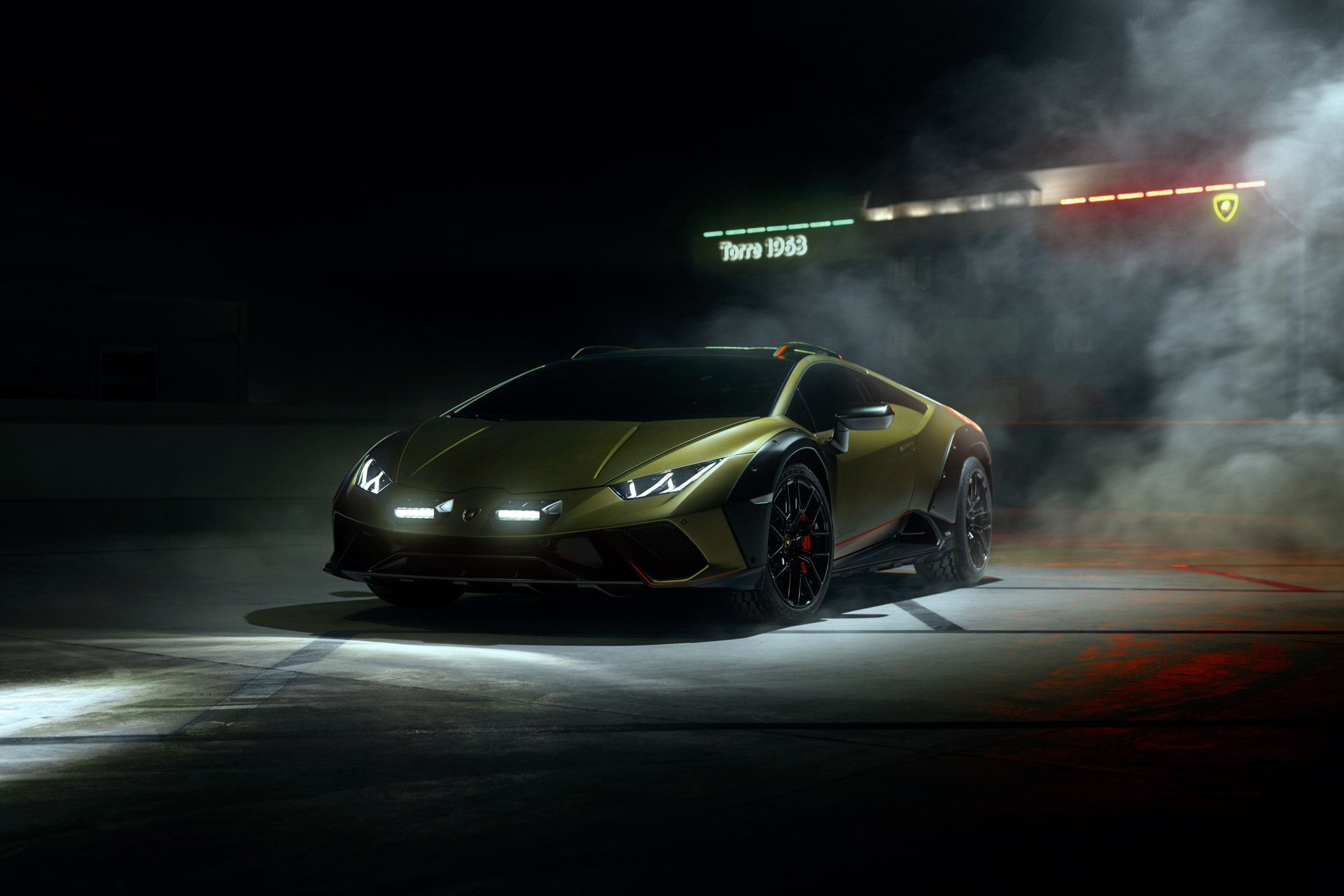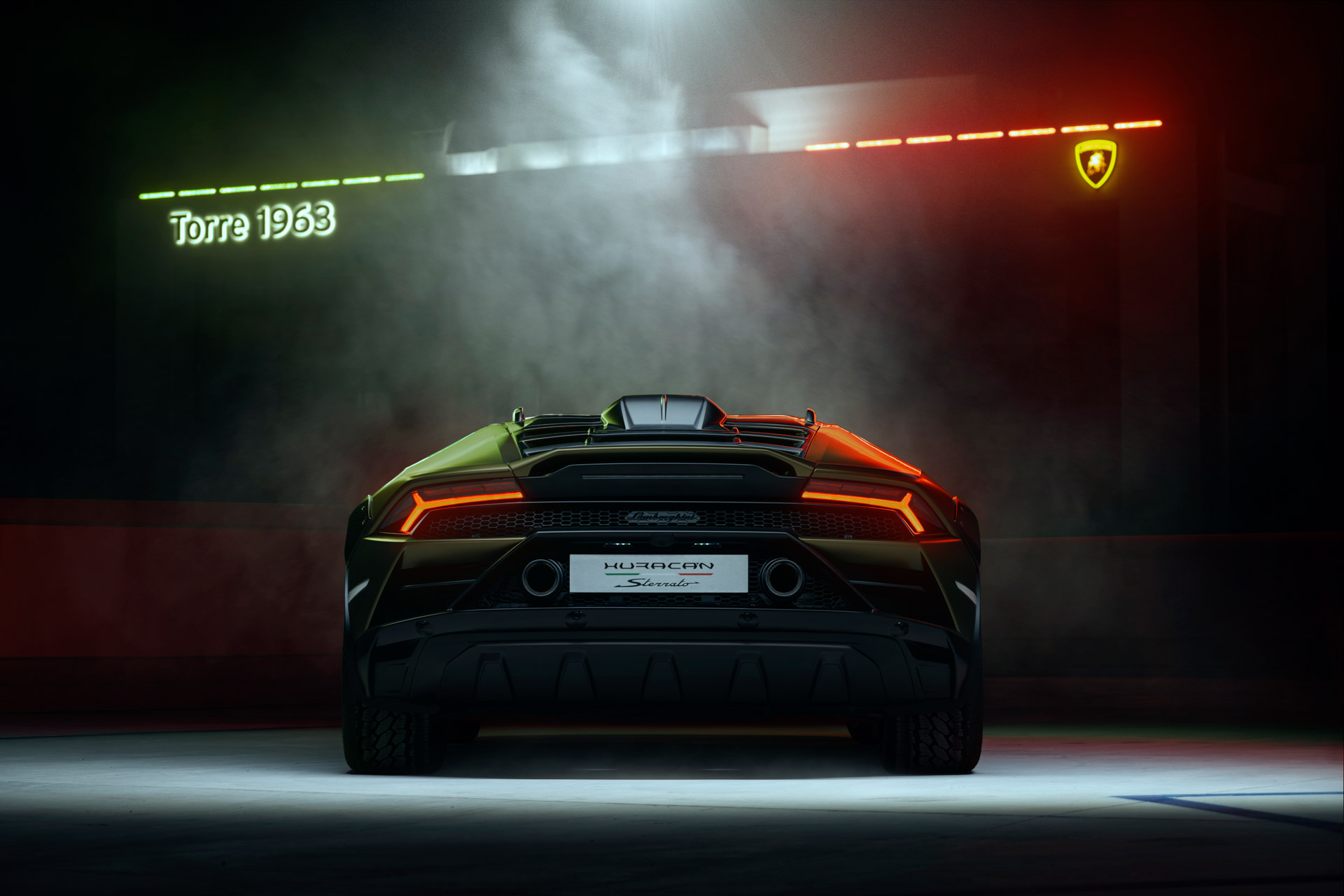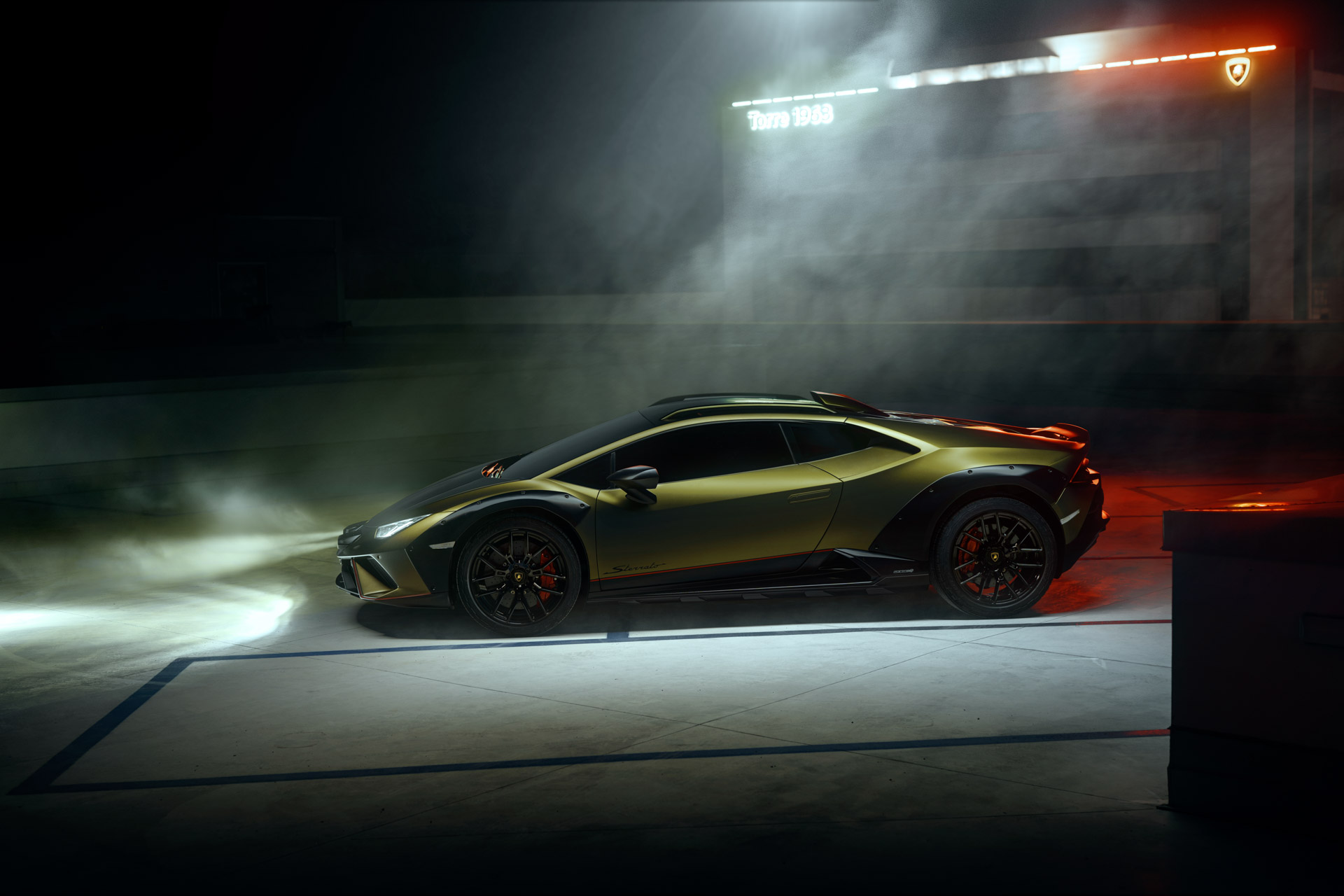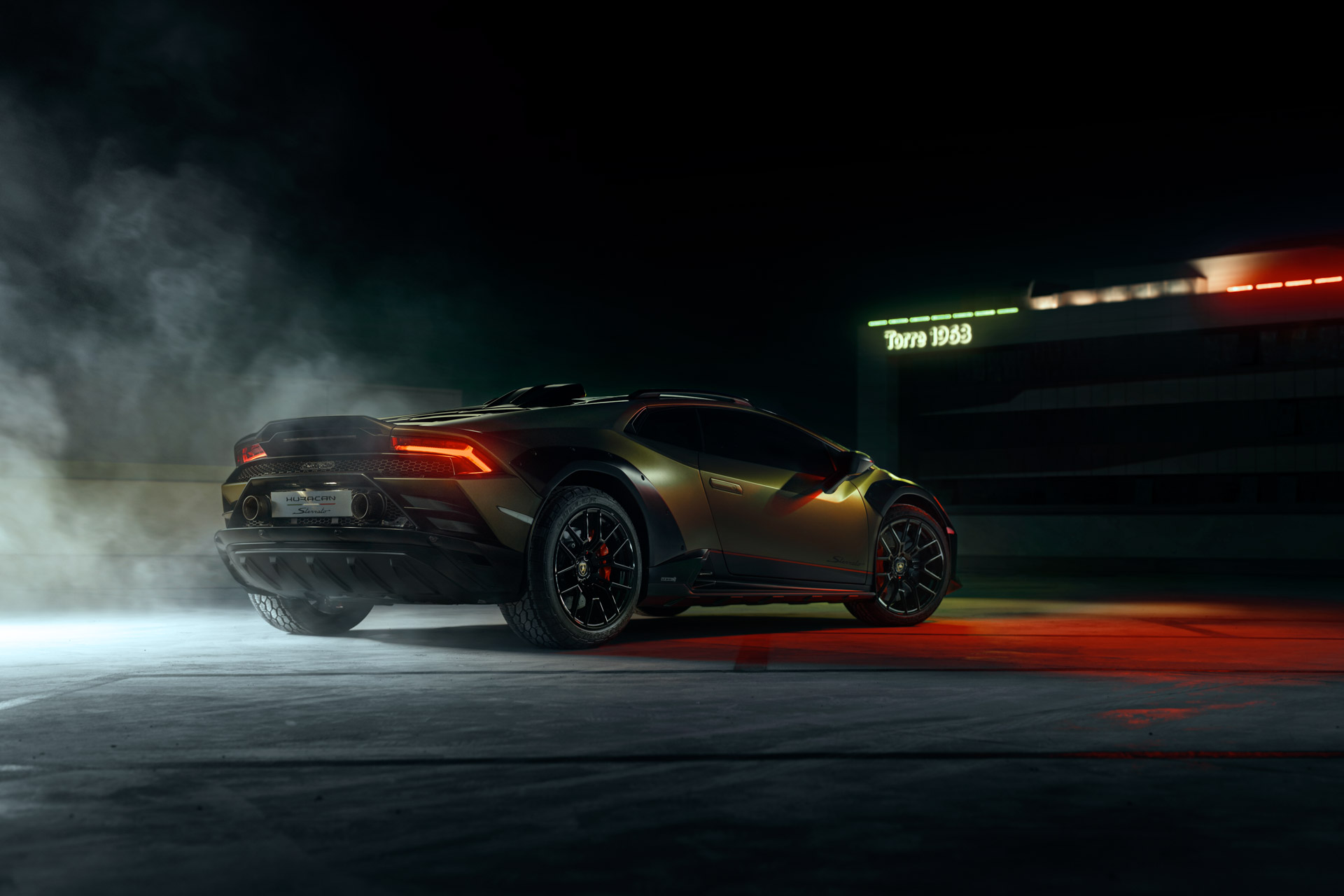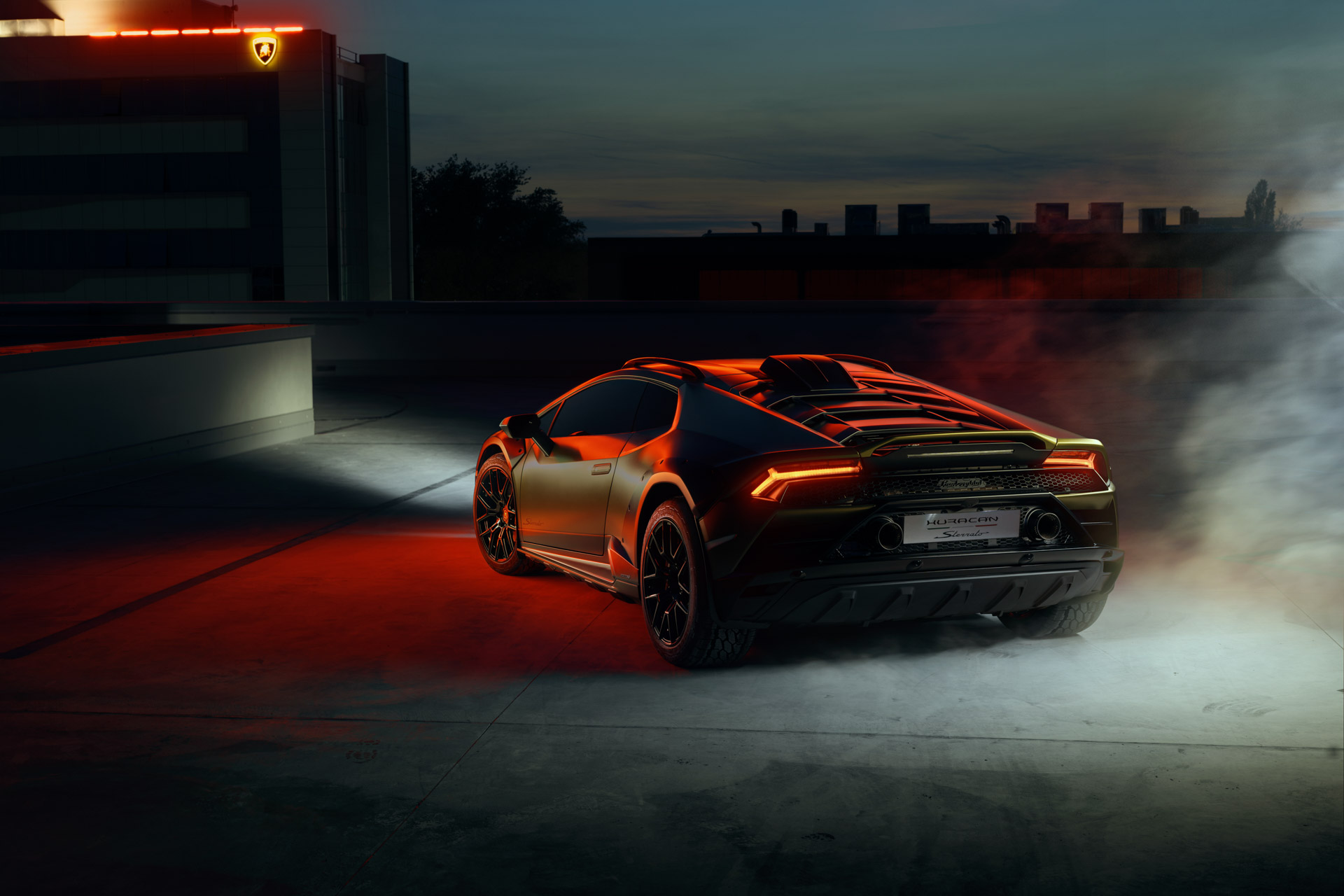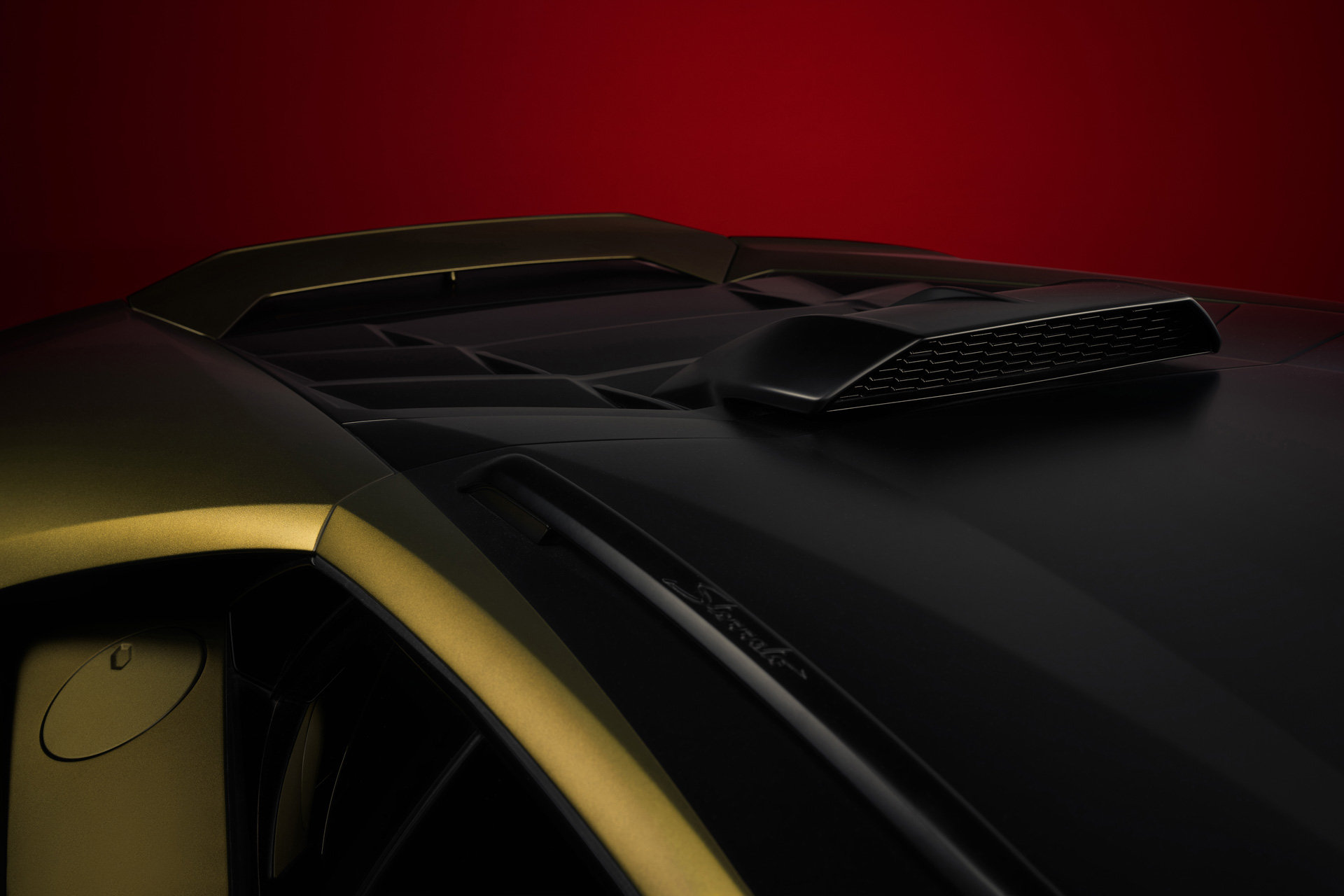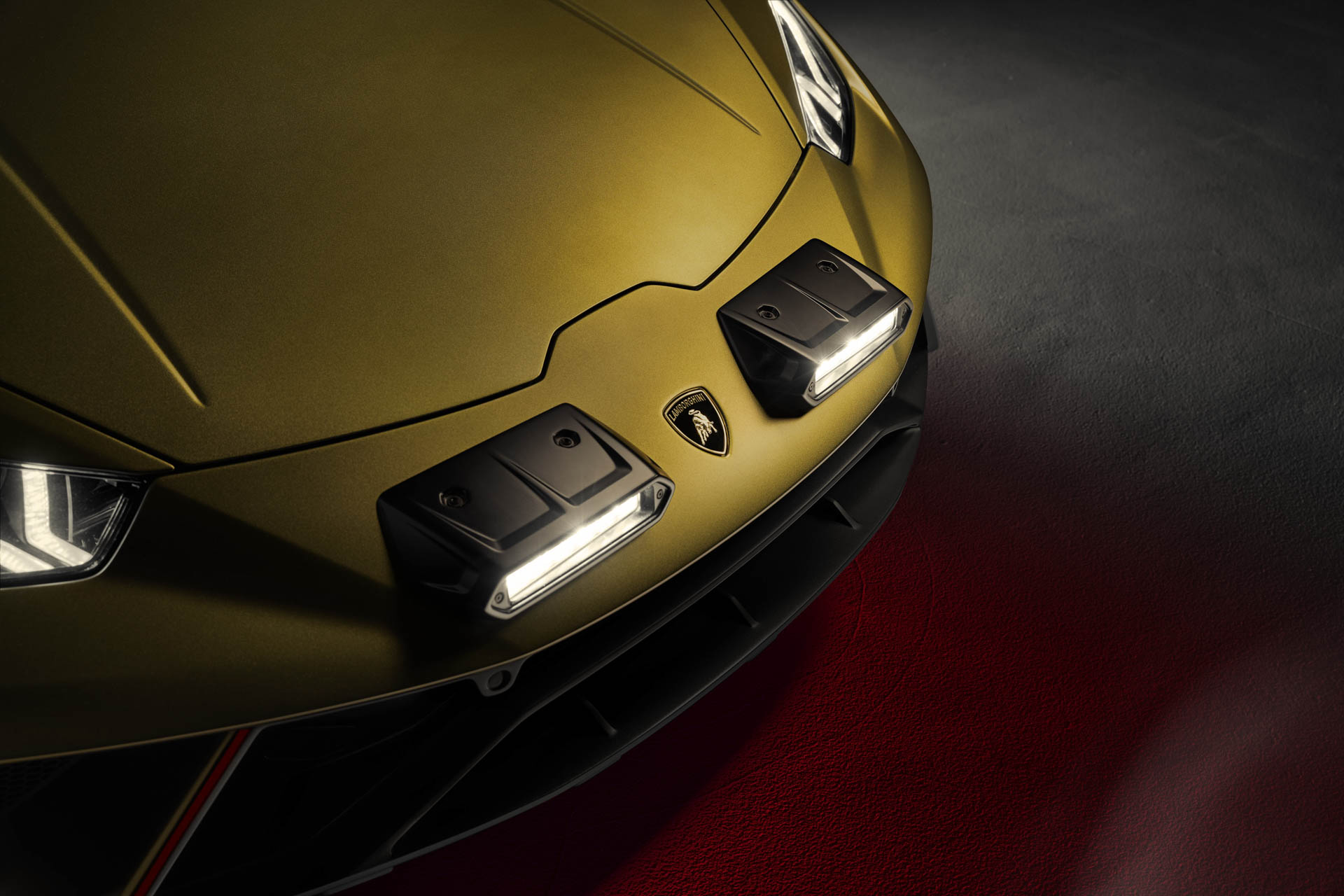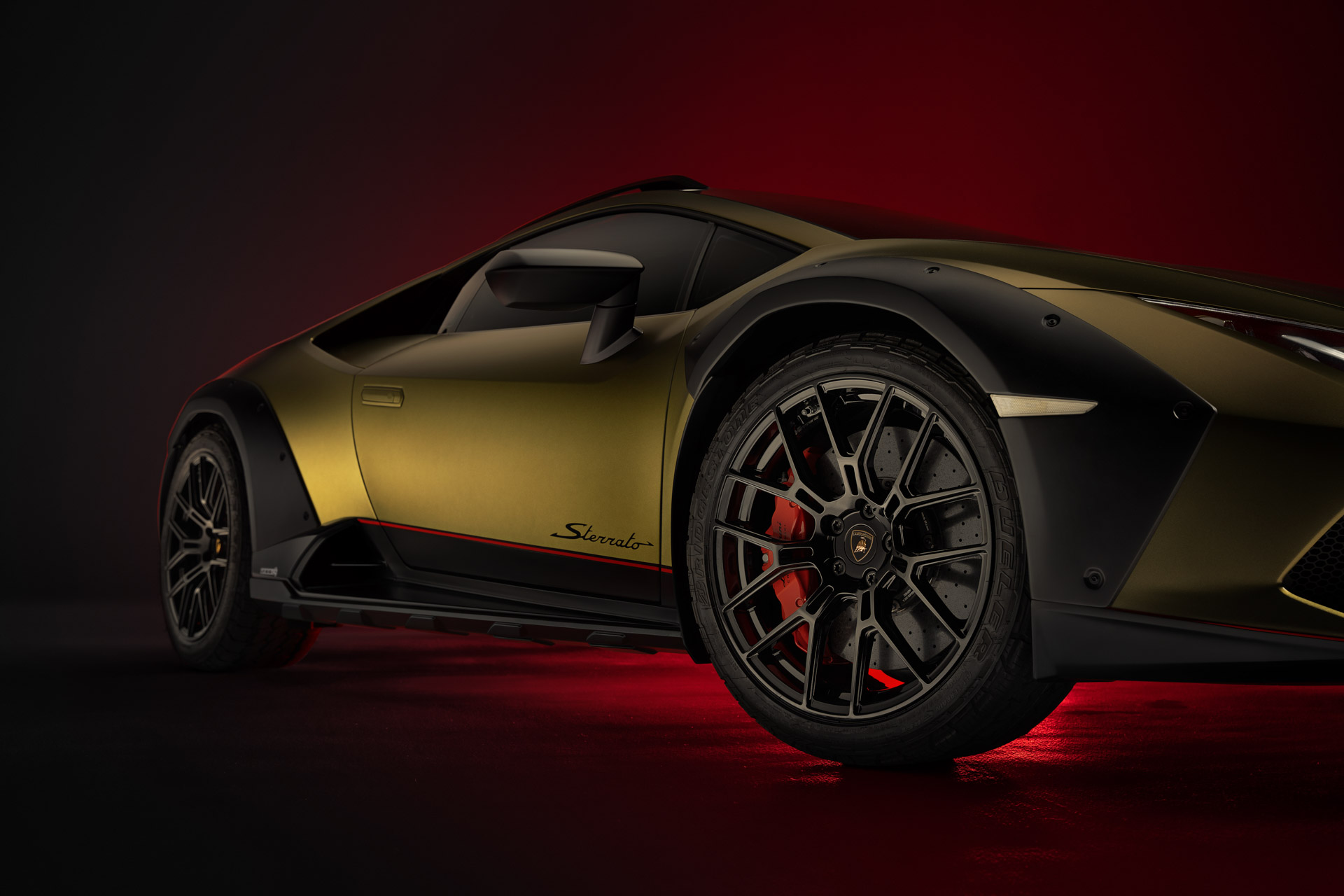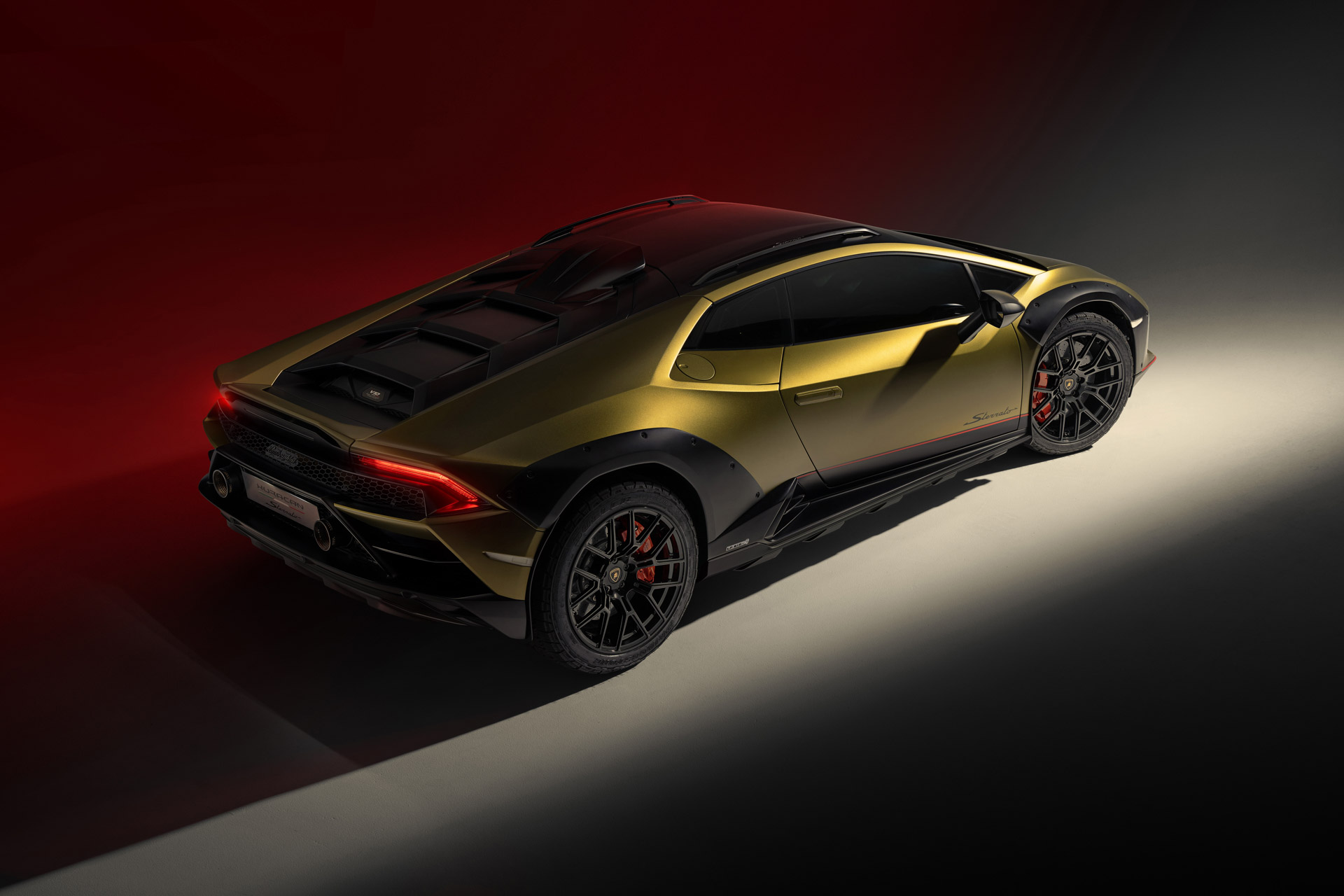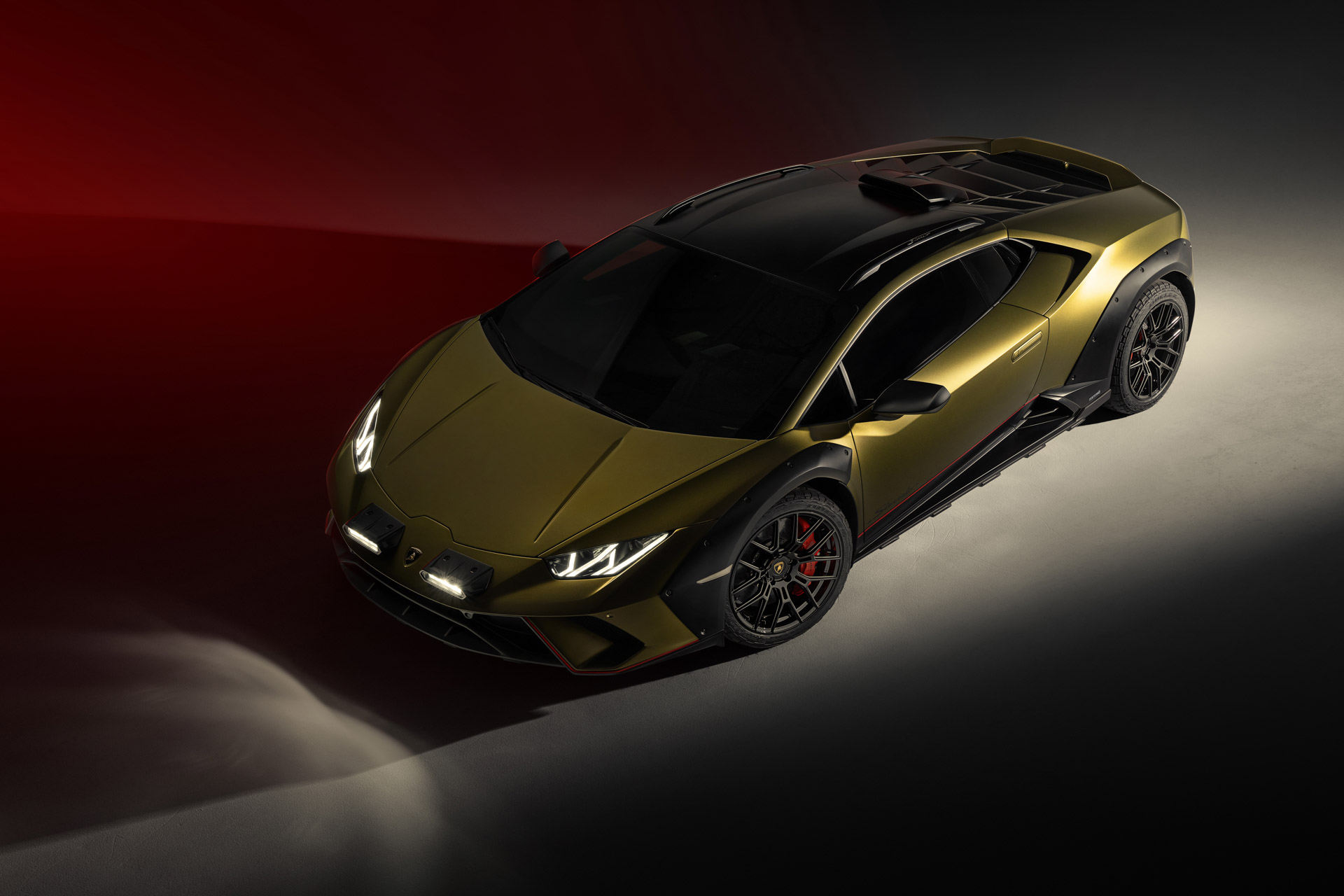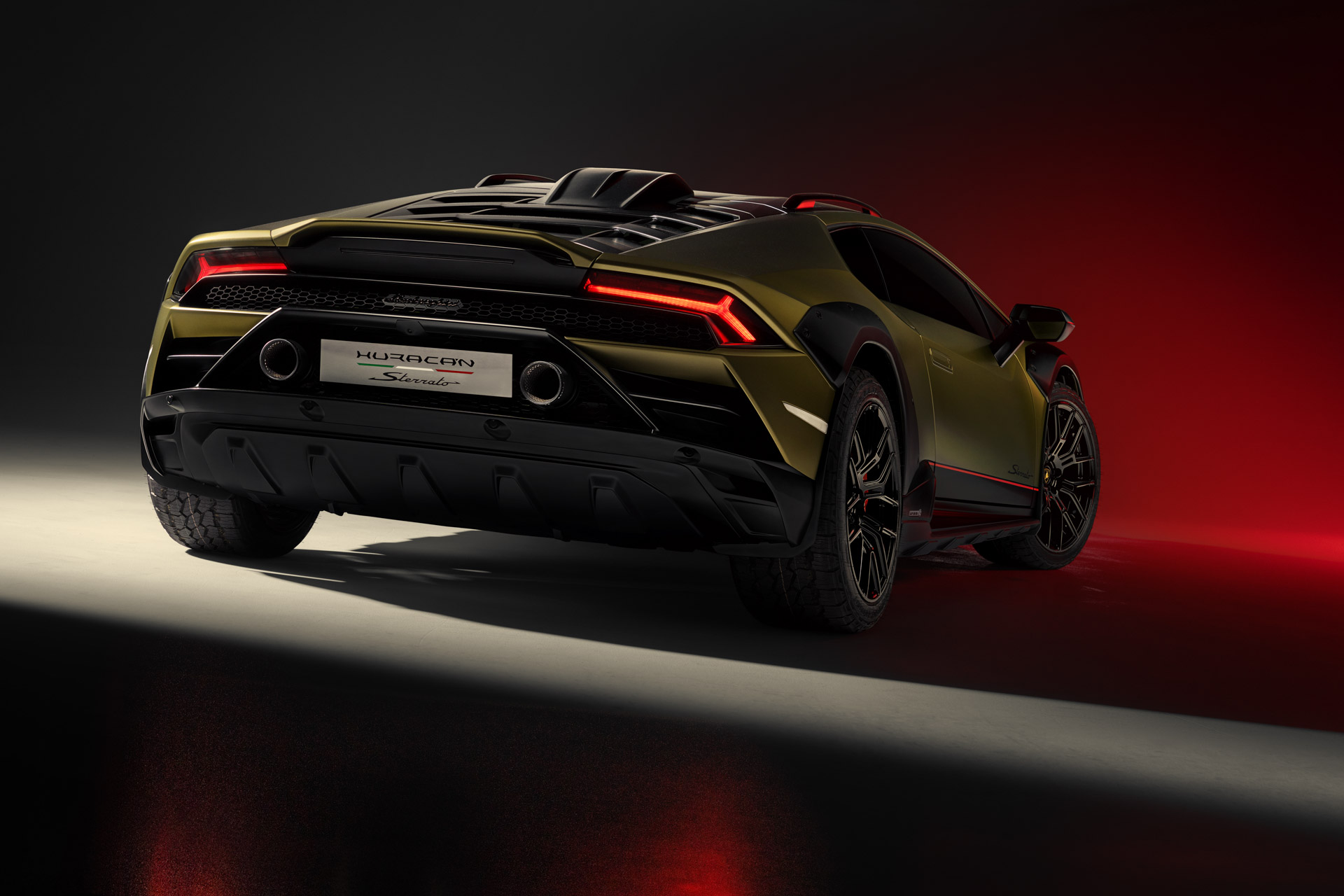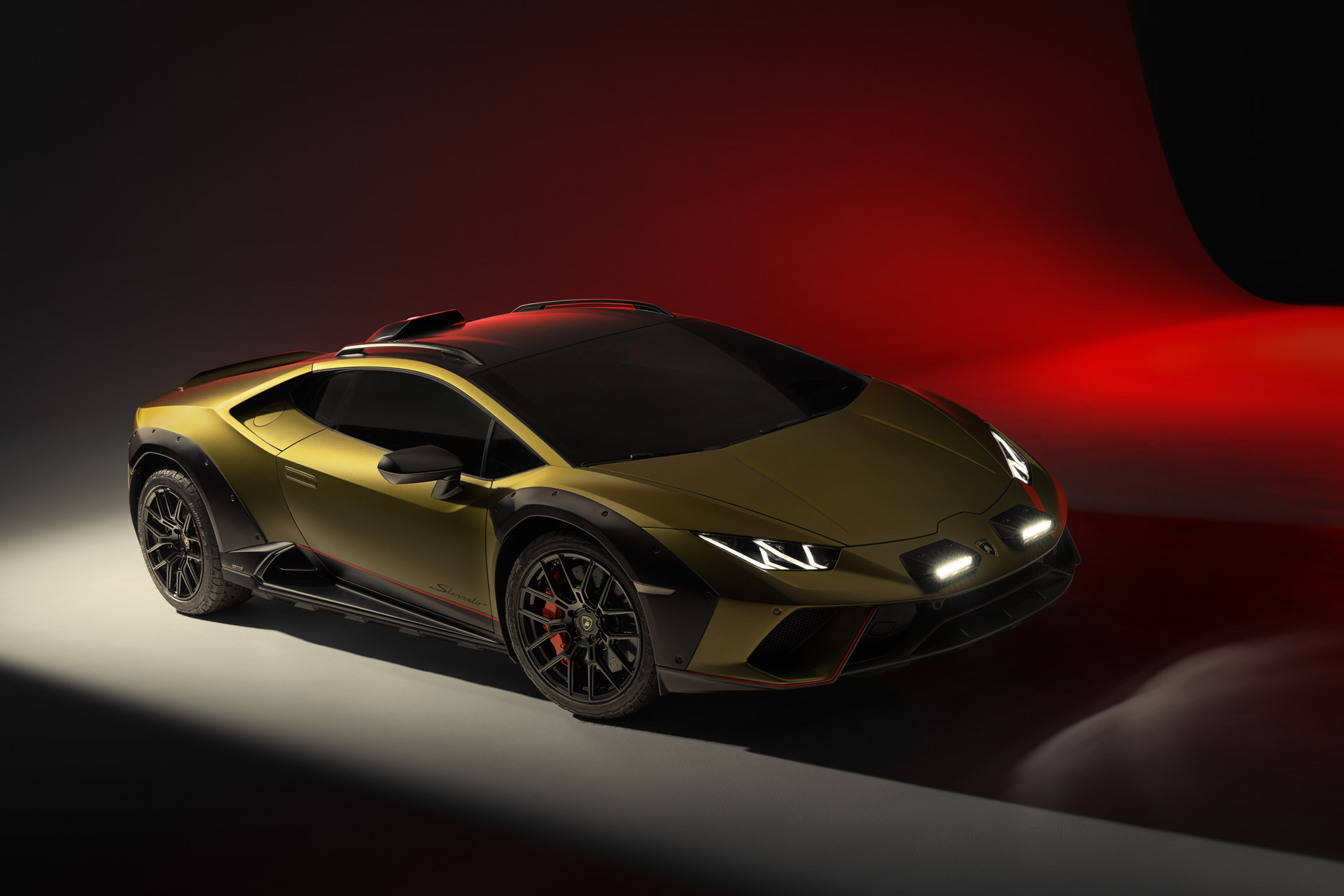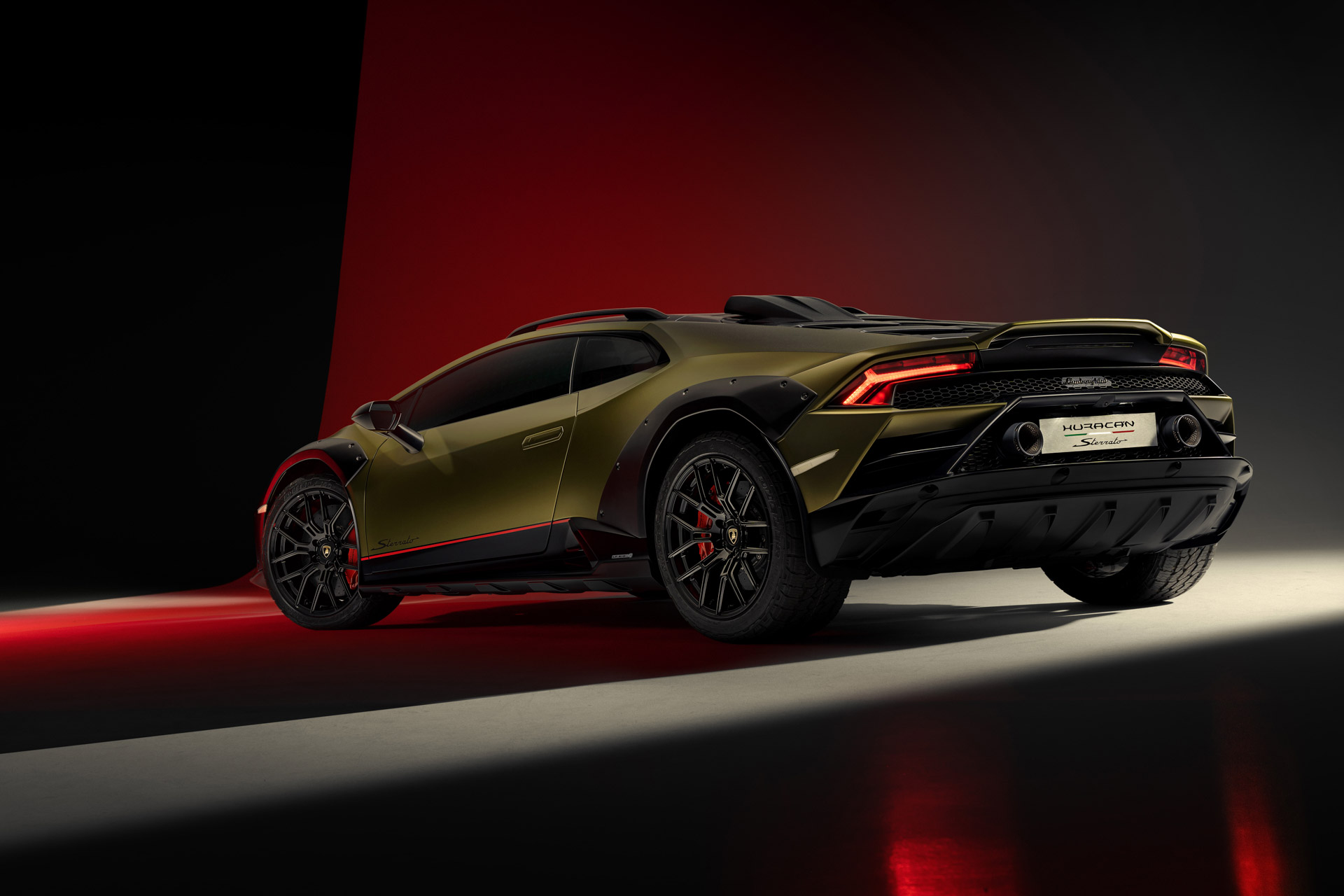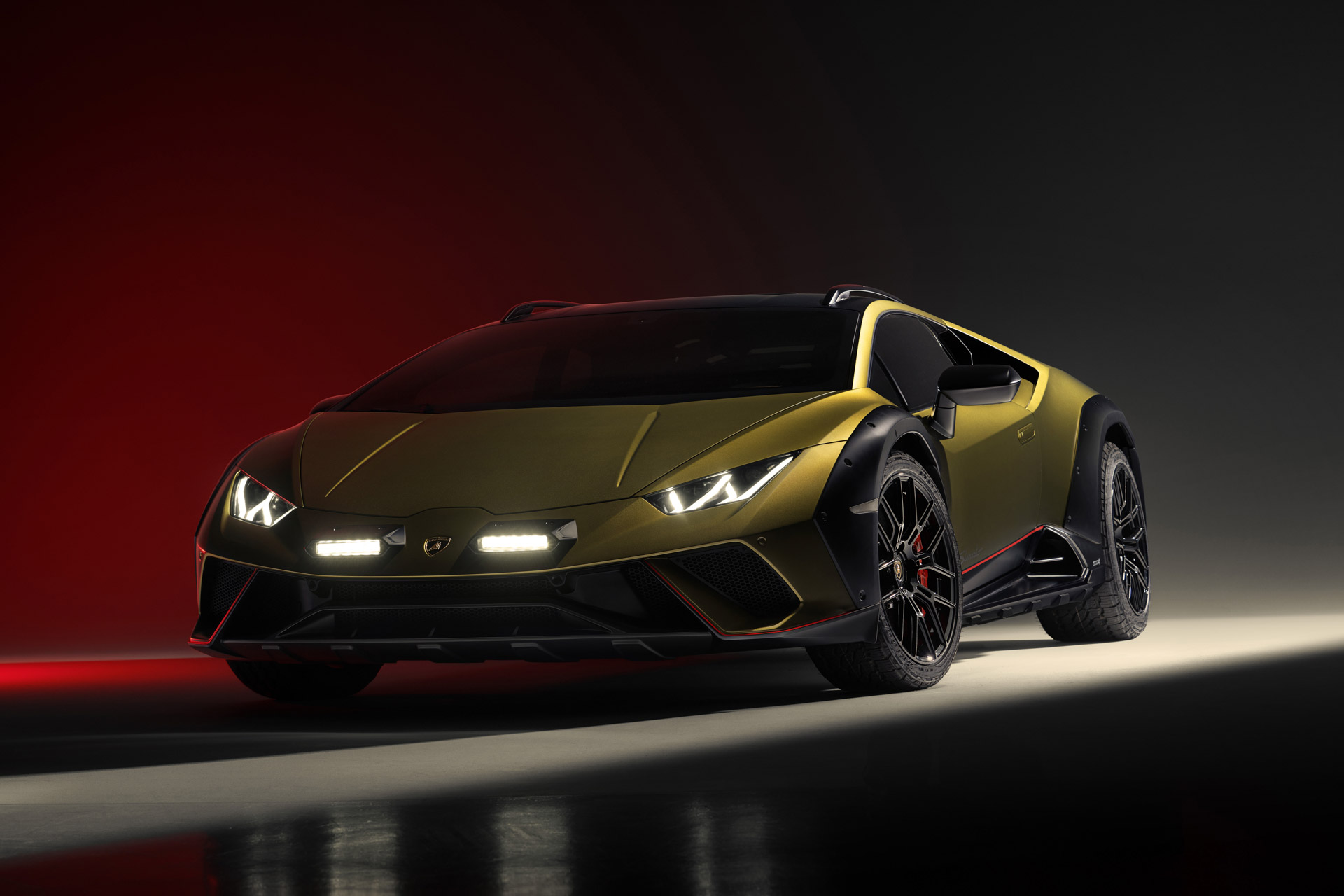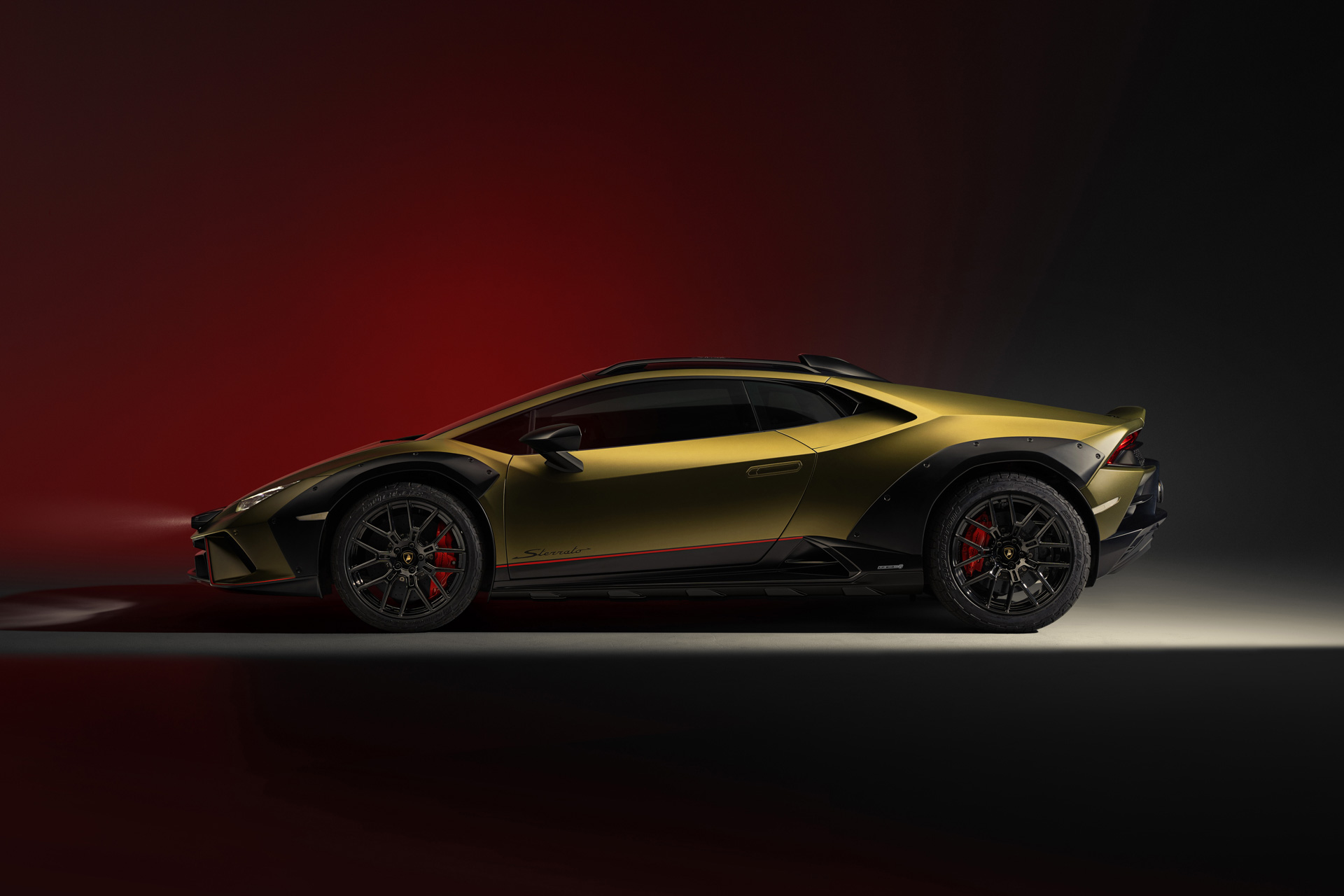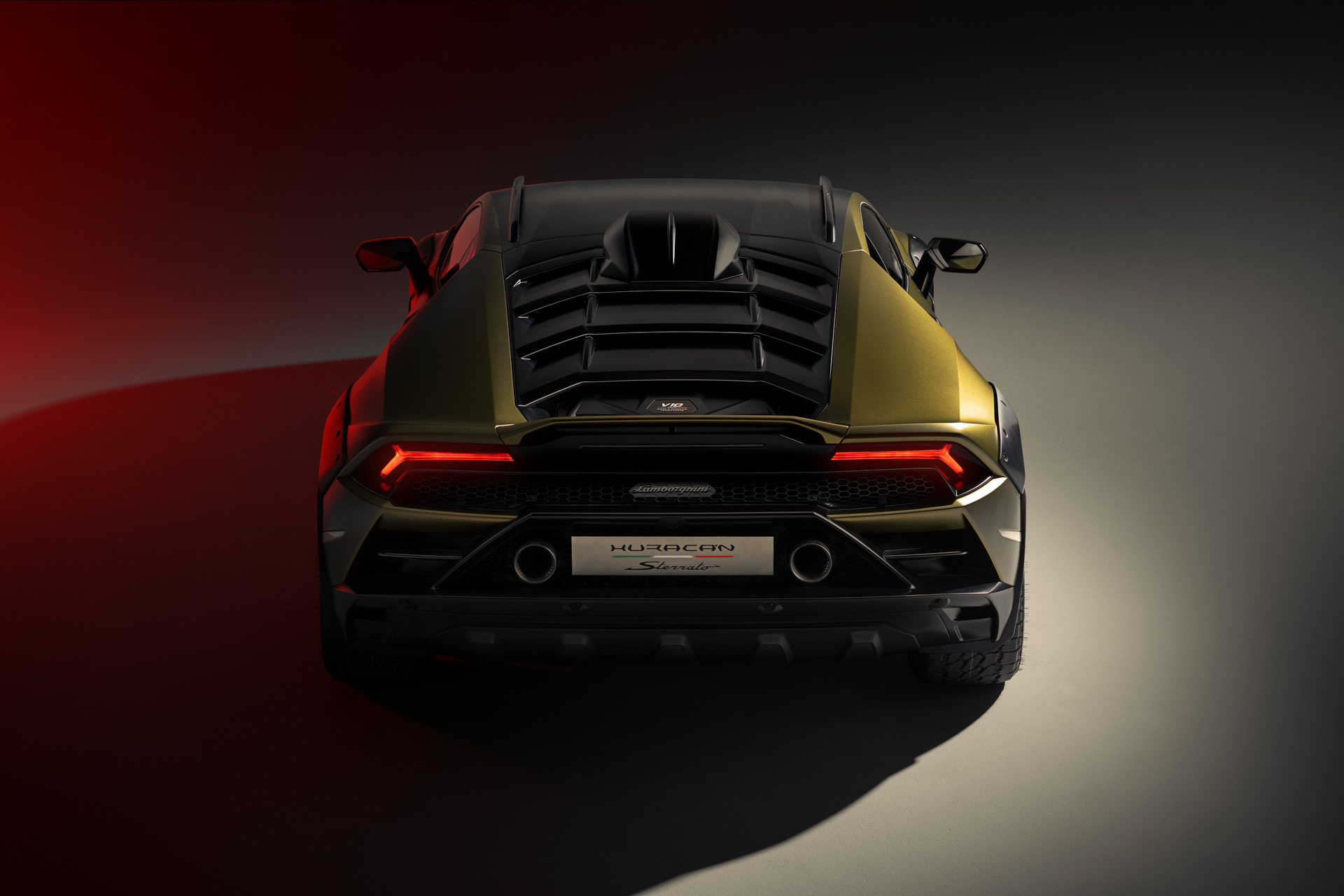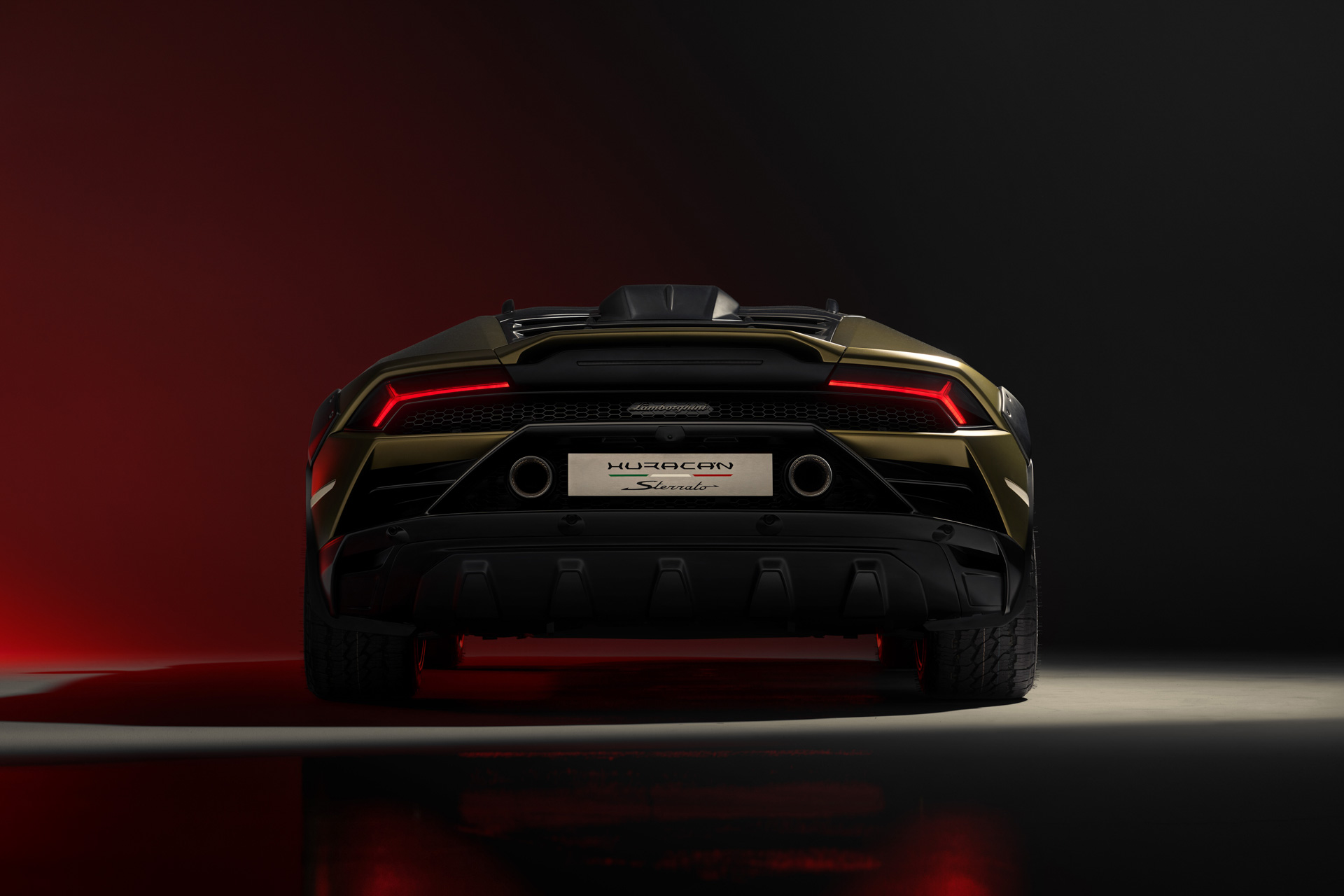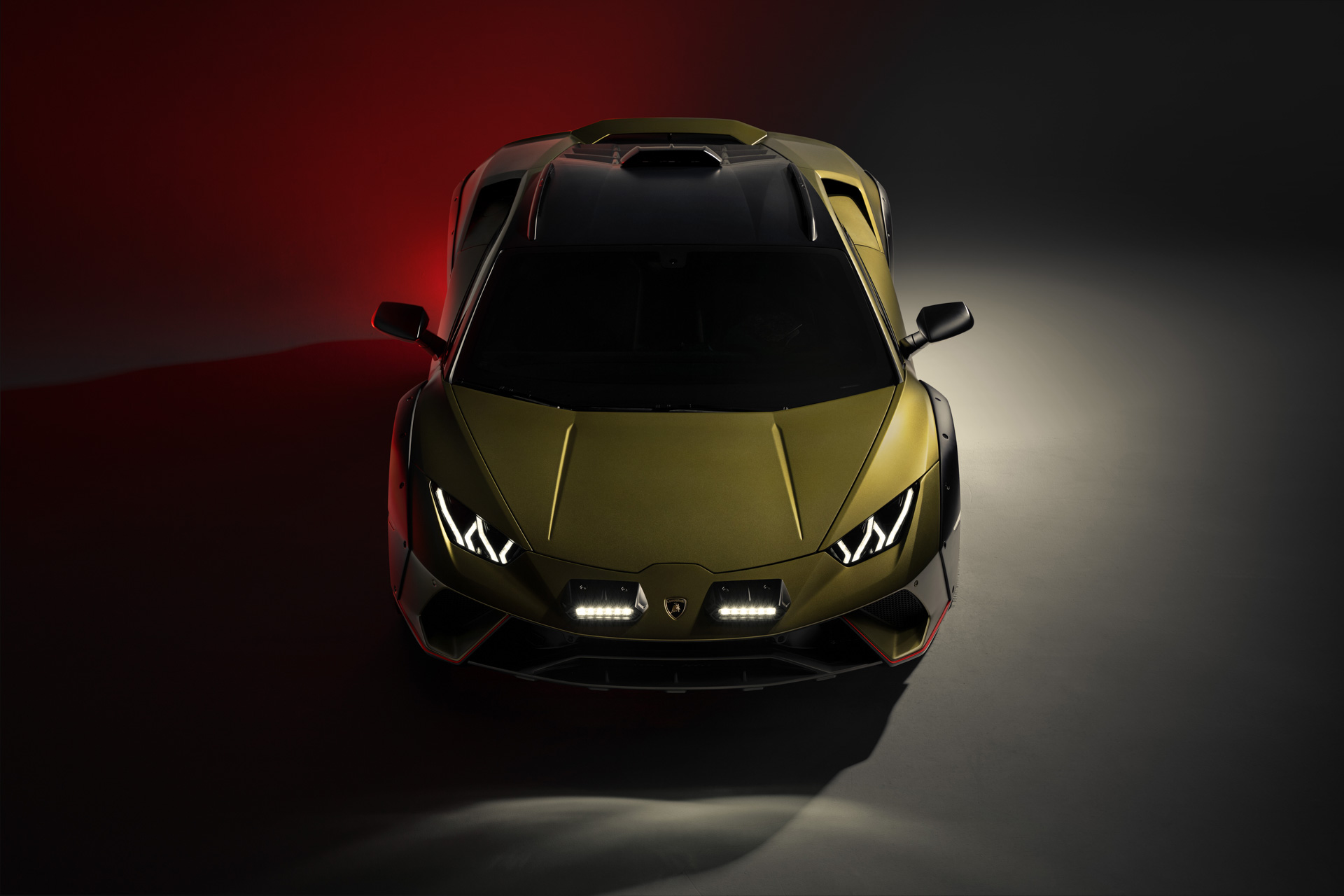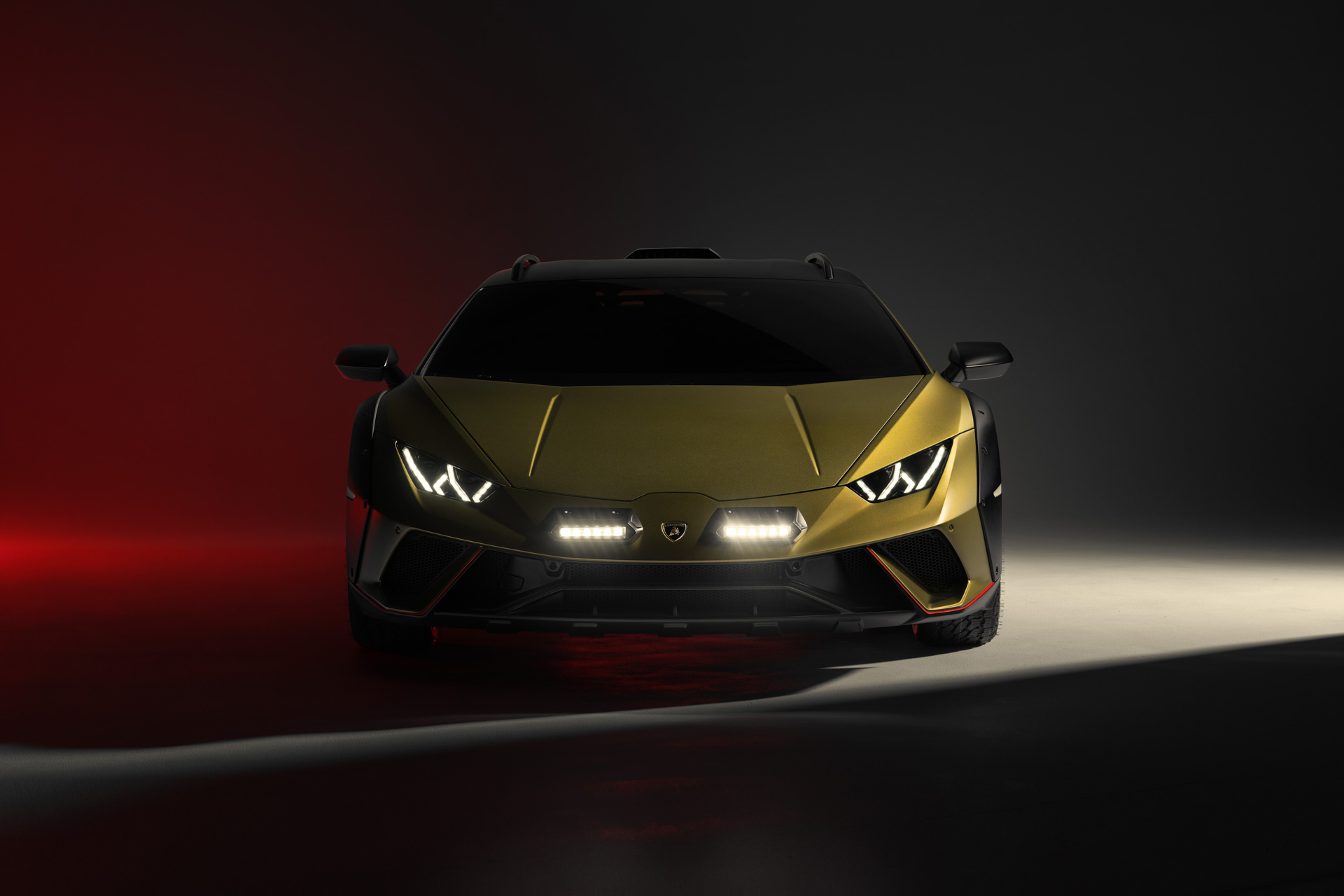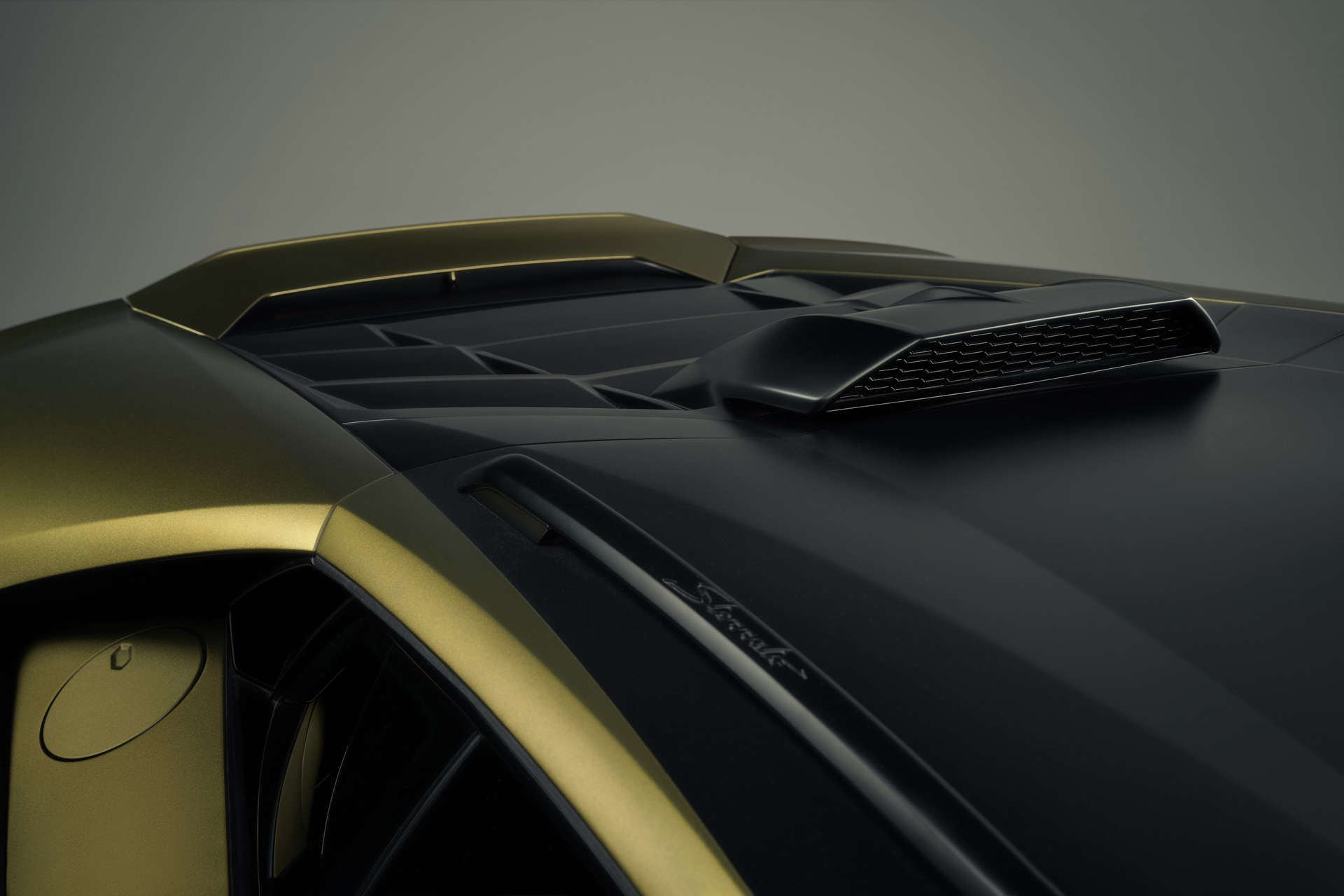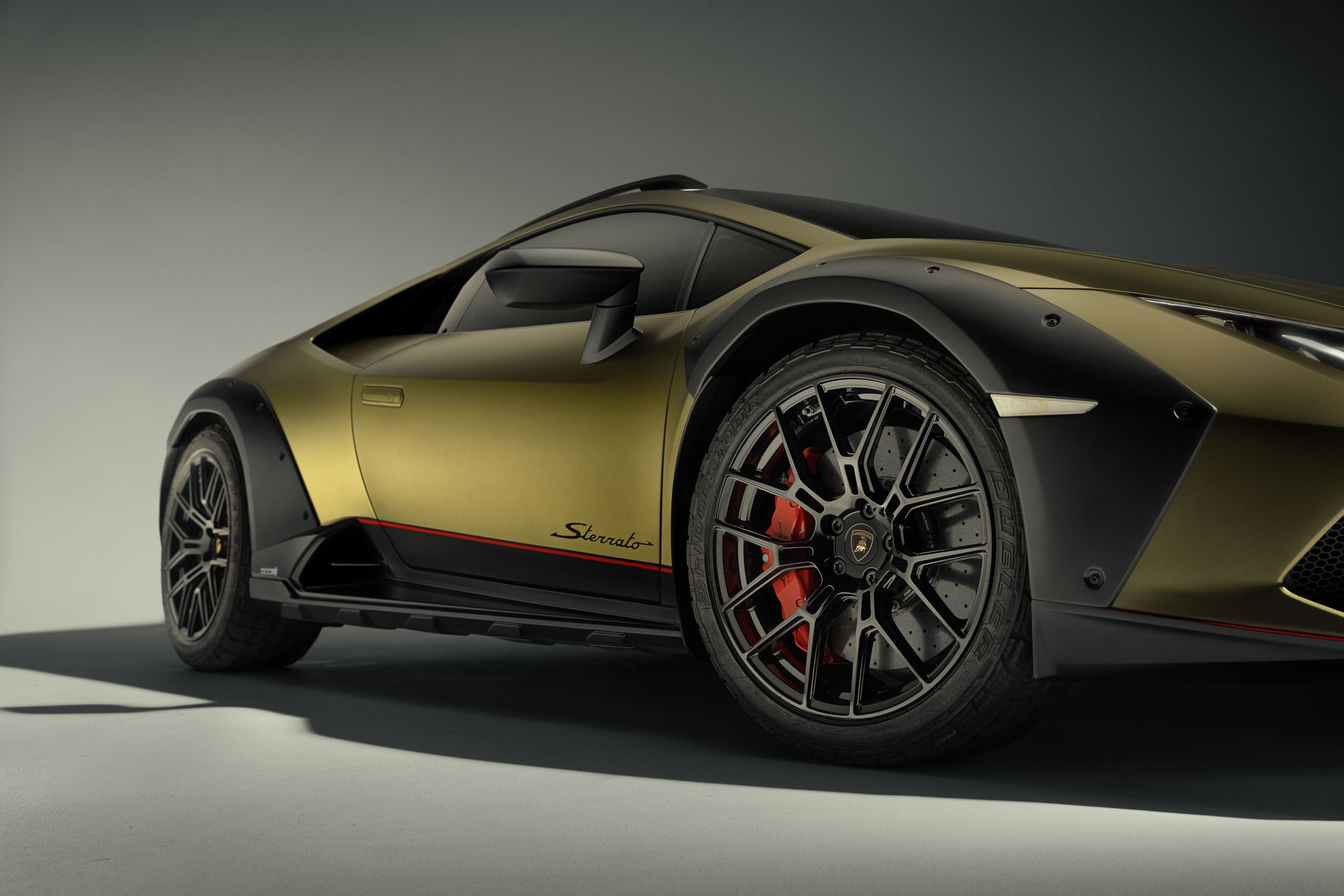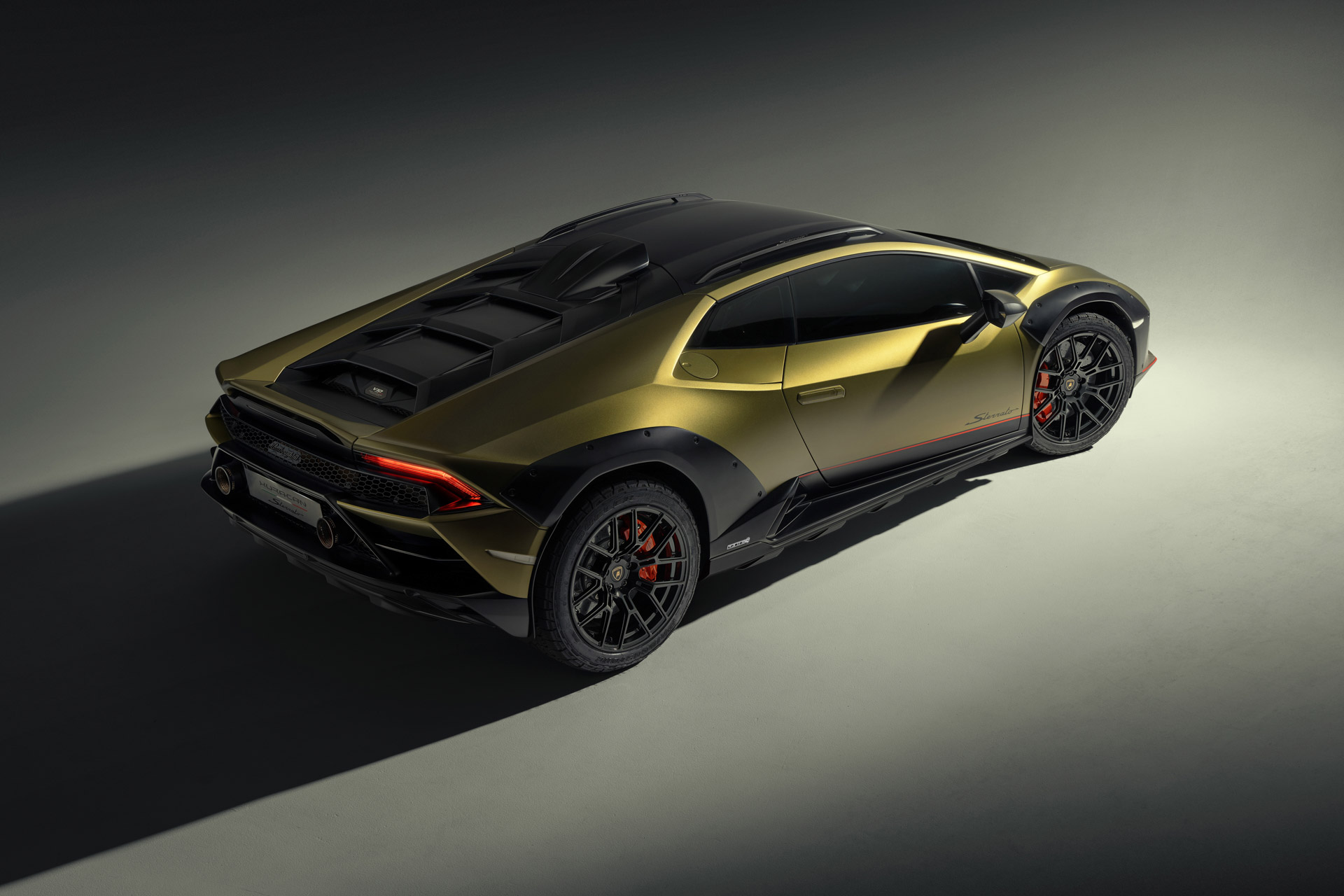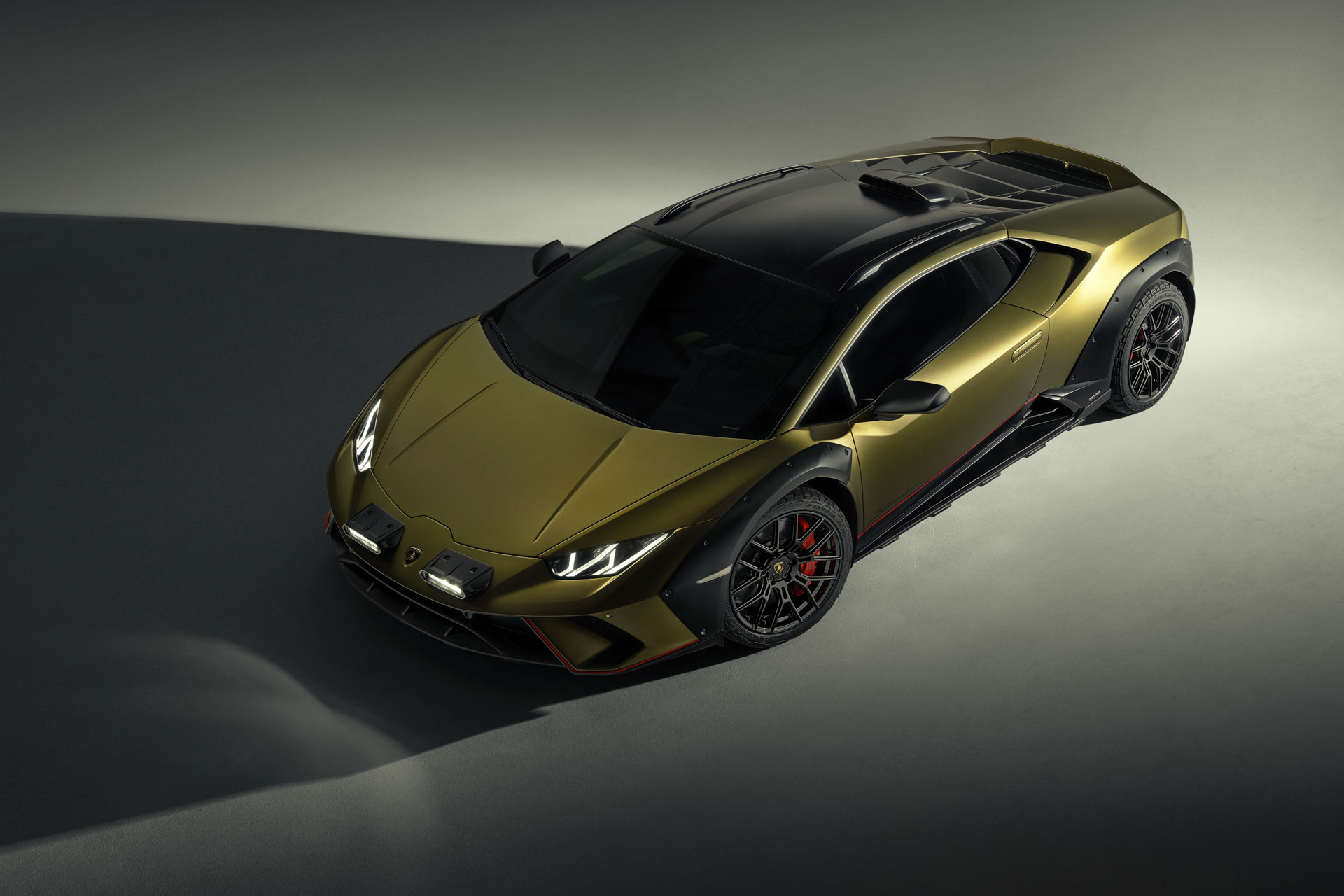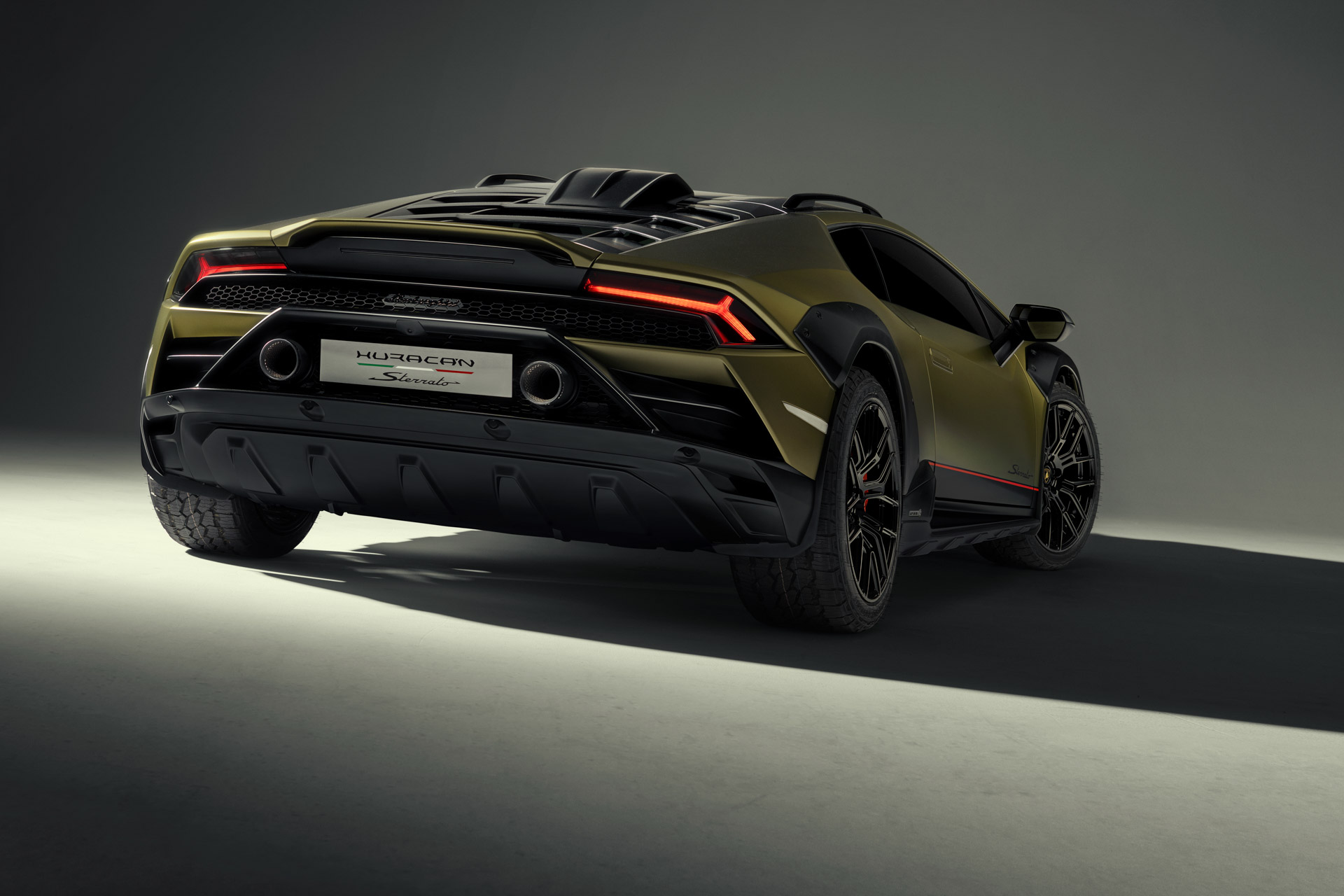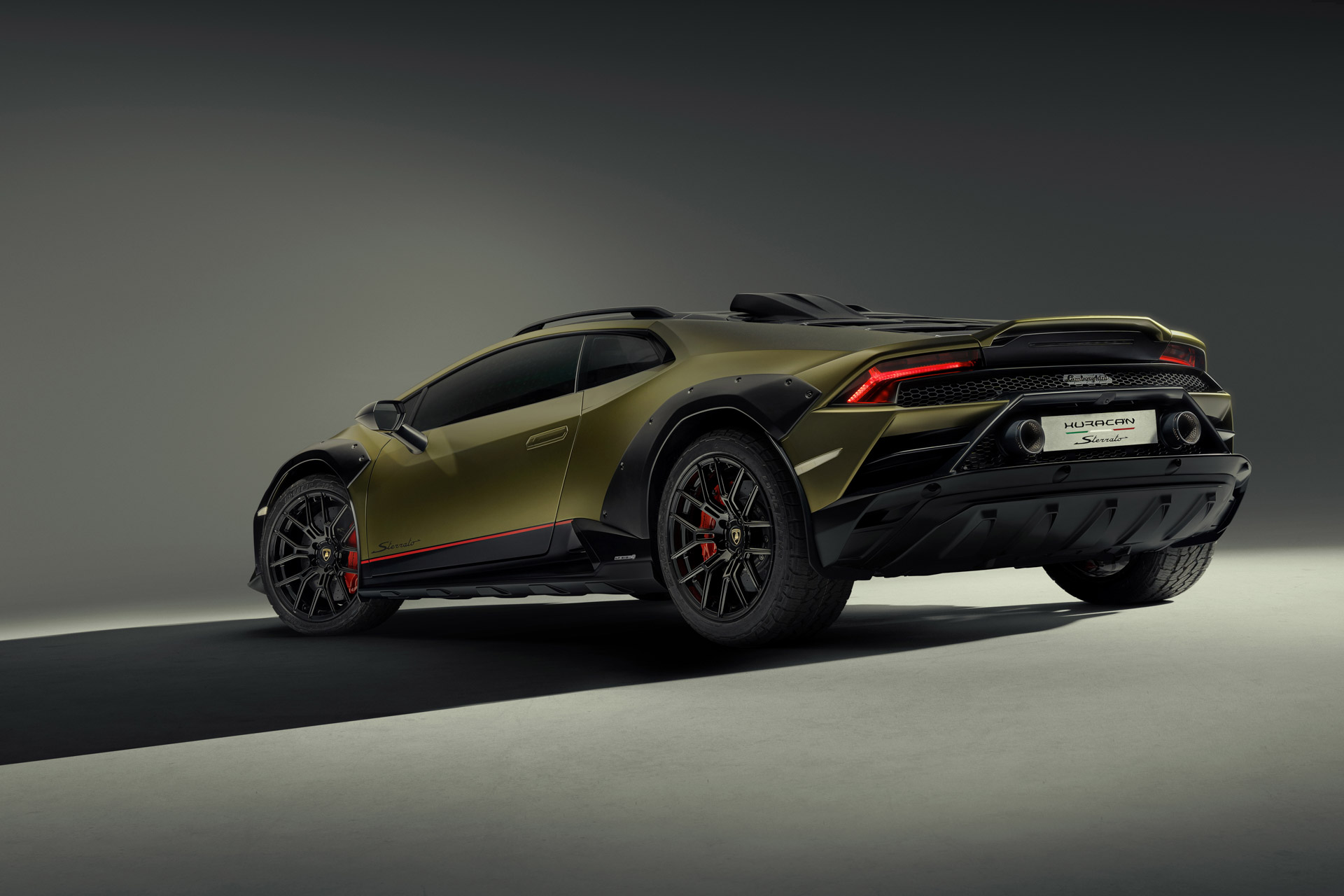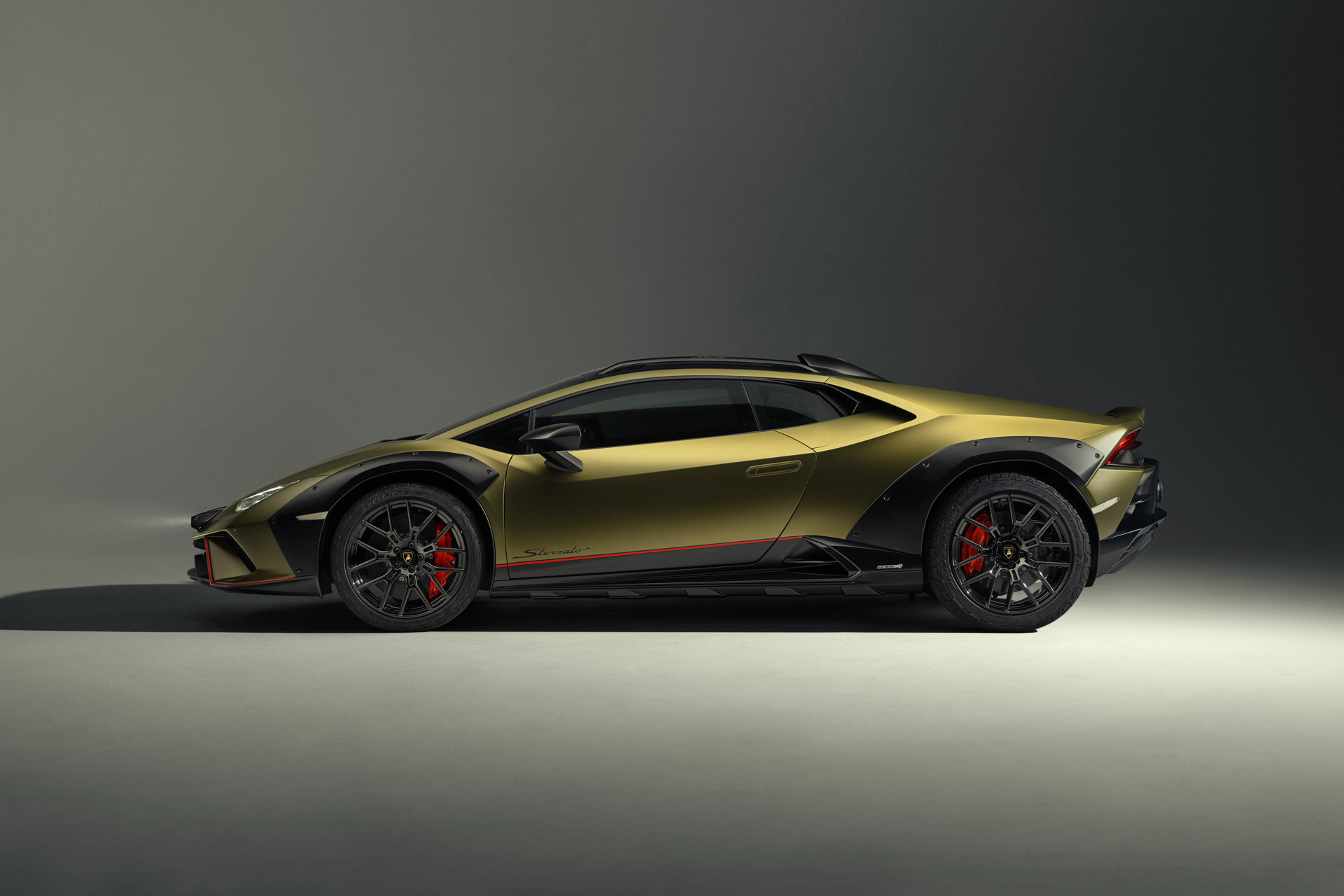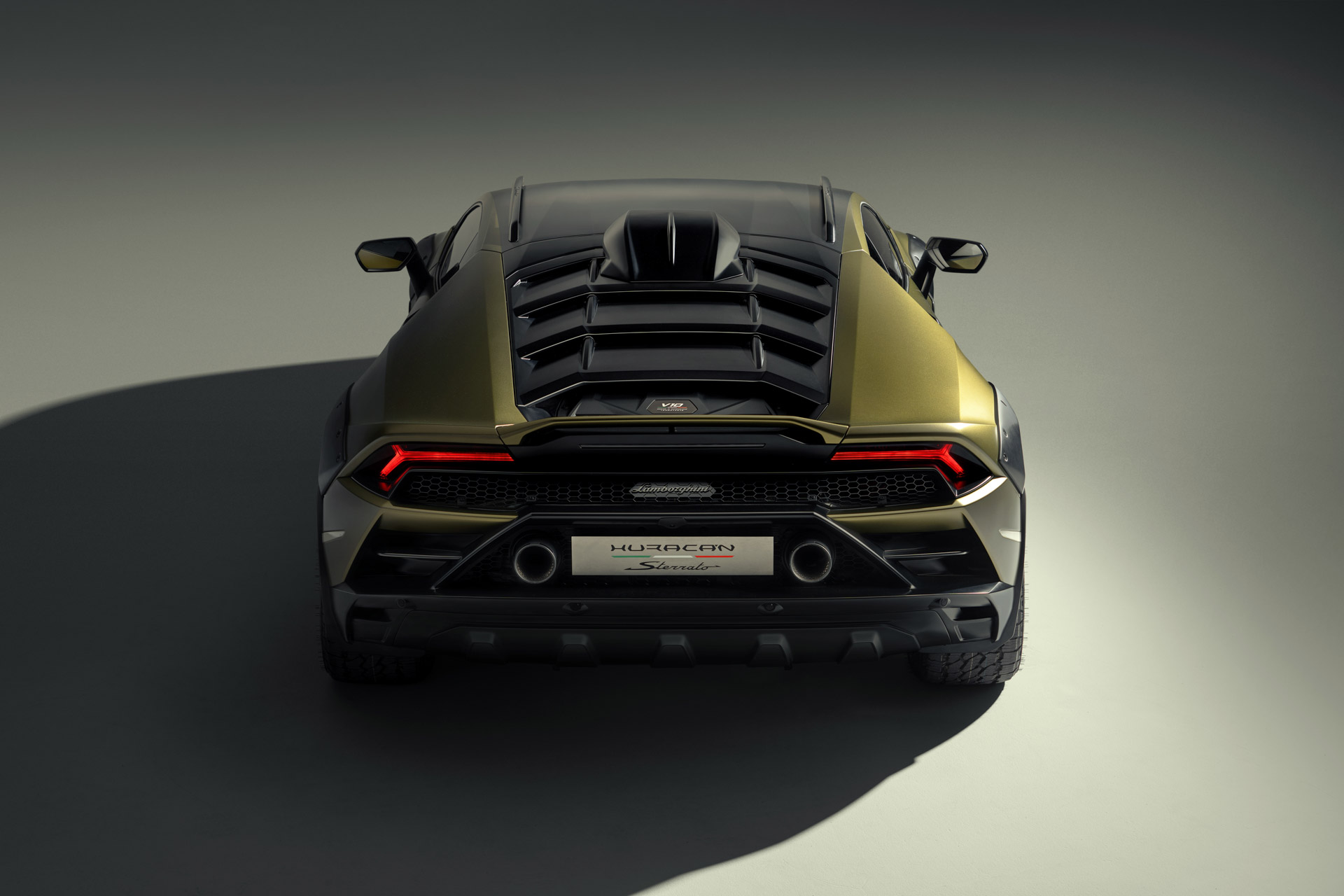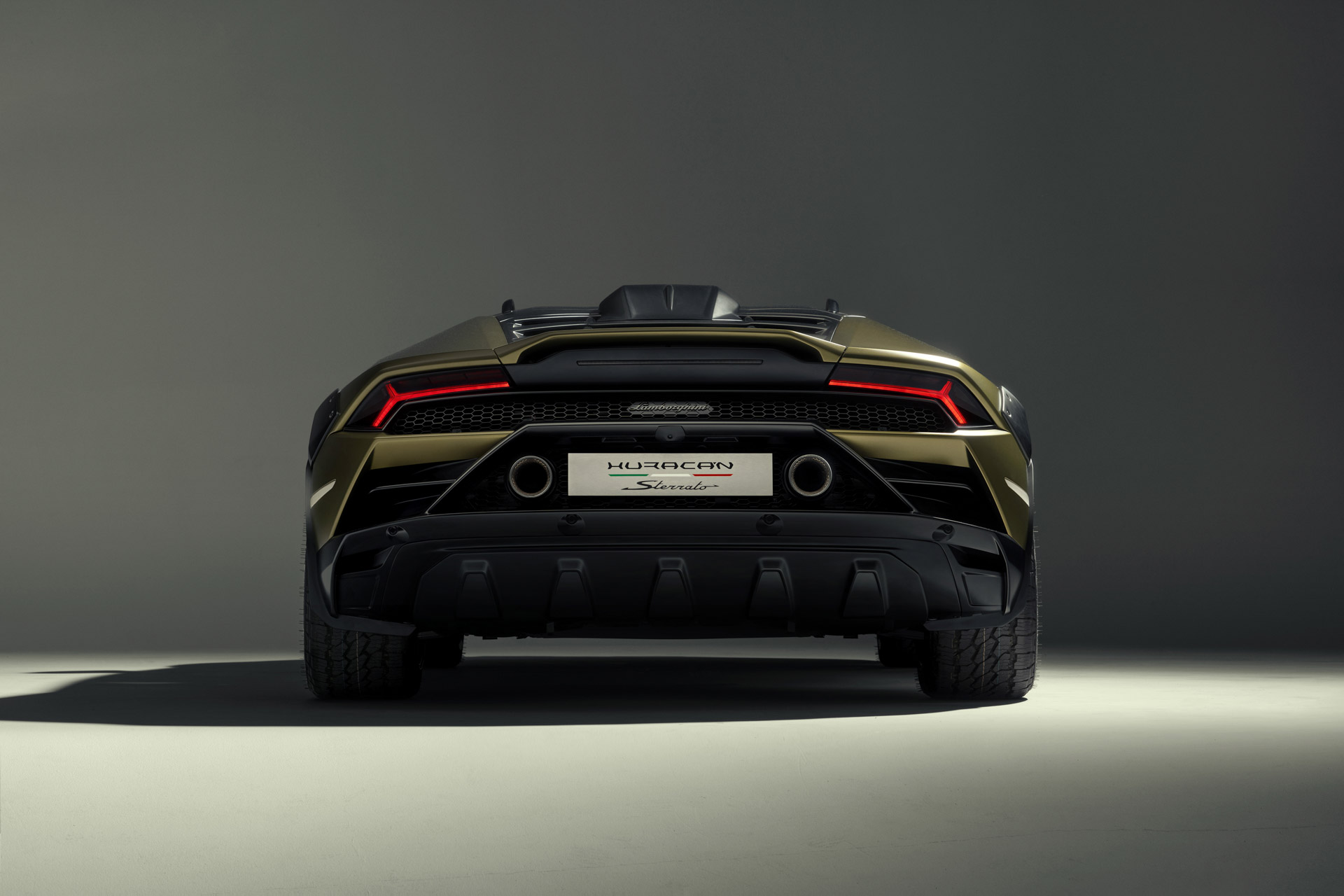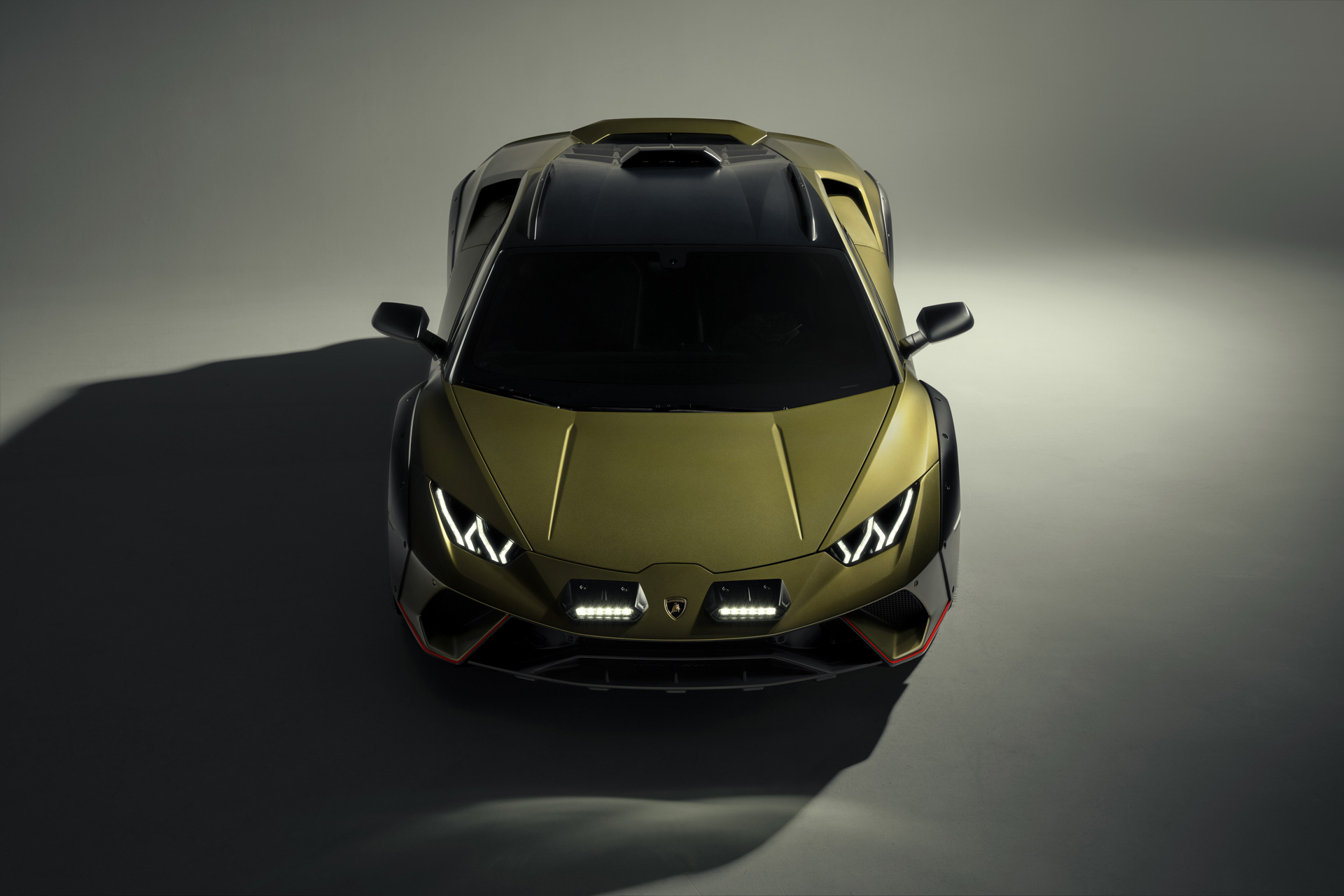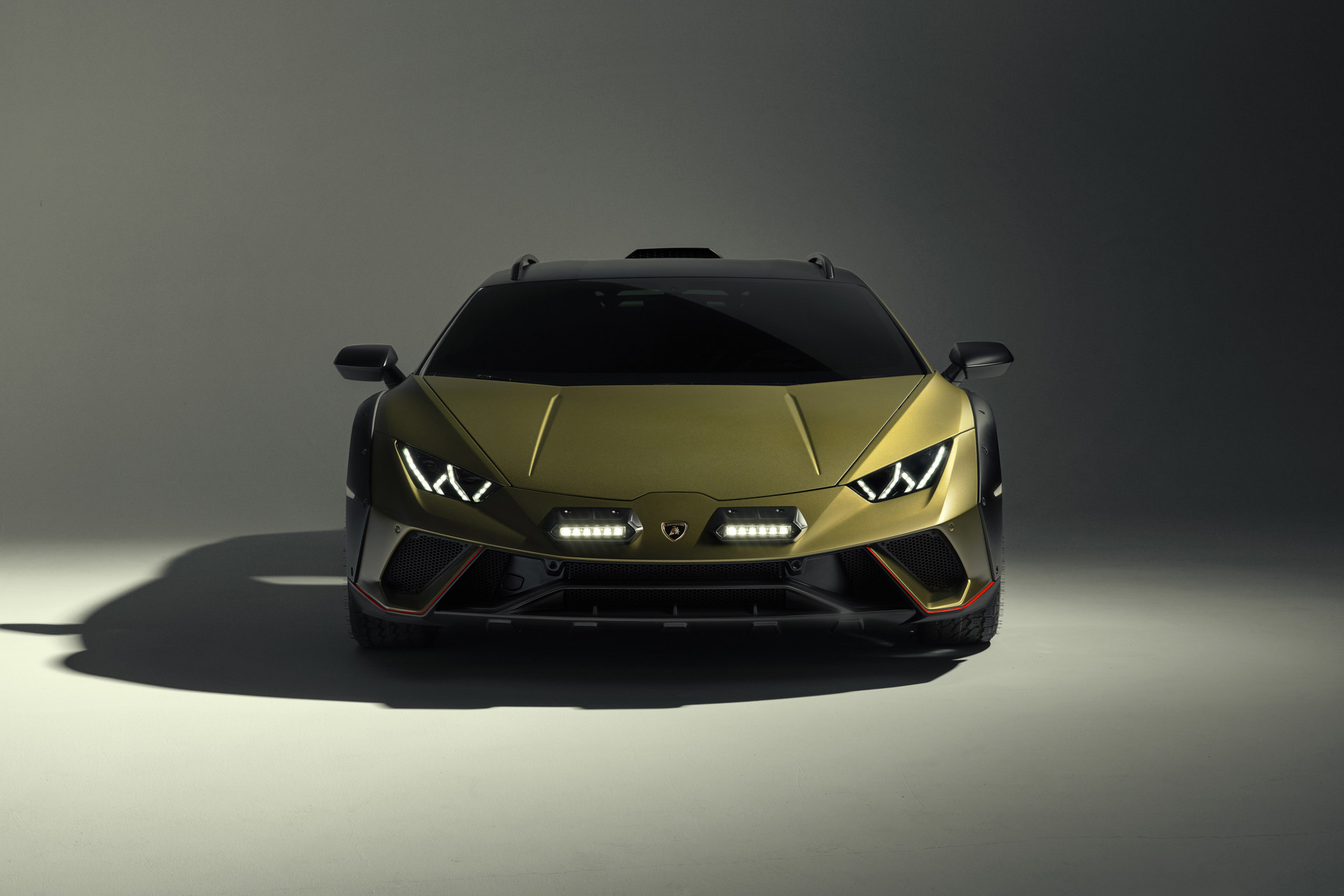Lamborghini is blazing a dirt trail for supercars with the Sterrato, a lifted, pumped-up Huracan that thinks mid-engined two-seaters can be fun both on and off road.
You’ve probably seen the teaser videos and the undisguised images so you already know what the Sterrato looks like. But now Lamborghini has finally given us the technical detail to go with it, enabling us to see how much SUV substance there is to go with the Sterrato’s unarguable off-road style.
More: 2023 Porsche Dakar Is The Slowest 911 Since The ’80s, But We Want One So Badly
So let’s cut straight to it: a 1.7-in (44 mm) increase in ride height isn’t going to be enough to transform the Sterrato into some kind of Jeep Wrangler rival in the rough. Lamborghini doesn’t quote an actual total clearance number (we estimate around 6.7-7 in / 170-180 mm max), but it’s probably got little more ground clearance than the average sedan, and Moab wasn’t exactly stacked with Hyundai Elantras on a weekend last time we checked.
That appears to be a fixed 1.7-in, too. There’s no function to adjust the ride height further, as there is with the new Porsche 911 Dakar, which jumped ahead of the Lambo in the VW Group global reveal line, no doubt much to the Italian’s annoyance. But the extra fresh air between the car’s floor and the earth’s floor will enable the Sterrato to at least venture a little way off the black stuff, plus make it more practical and distinctive around town, which, let’s face it, is where these things are going to be live.
Read to get dirty?
But it’s not all about the pose. Lamborghini has made some genuine concessions for drivers who want to get dirty. The underbody features aluminium protection, the sills are reinforced and the 19-in Bridgestone Dueler AT002 tires (235s up front, 285s at the back) are designed to work on gravel and tarmac. They also feature runflat technology allowing the car to be driven for 50 miles (80 km) at 50 mph (80 kph) with zero air pressure.
The LDVI driving mode selector also gains a new Rally driving mode for low-grip situations, and Lamborghini says a roof-mounted air snorkel provides cleaner air on dusty tracks. It also happens to look very cool, as do the bolt-on wheel arch extensions covering tracks stretched by 1.2-in (30 mm) and 1.3 in (34 mm) front and rear, the bumper-mounted driving lights and the roof rails, which help give the Sterrato almost as much presence as the track-focused STO.
Performance figures
Where the Sterrato can’t match the STO, is in performance. The rear-wheel drive STO, its milder (also RWD) Tecnica brother and the regular all-wheel drive Huracan Evo all generate 631 hp (640 PS) from their 5.2-liter V10s, but the Sterrato makes the same 602 hp (610 PS) as the entry-level rear-wheel drive Evo. The 417 lb-ft (565 Nm) torque rating, meanwhile, matches the STO and Tecnica’s, but falls short of the 443 lb-ft (600 Nm) of the AWD Evo, which weighs 106 lbs (48 kg) less than the 3,241 lbs (1,470 kg) Sterrato.
So it’s no surprise that the crossover’s 3.4-second zero to 62 mph (100 km/h) time is between 0.2-0.4 seconds slower than every other Huracan except the rear-wheel drive Spyder, which needs 3.5 seconds. And even that will outrun the Sterrato eventually. Like Porsche’s 911 Dakar, the Sterrato is electronically neutered at the top end, in this case to 162 mph (260 km/h), while the other members of the Huracan family can all top 200 mph (322 km/h)
More: What Sports Cars Do You Want To See Getting Off-Road Versions Next?
Still, those numbers, and the naturally-aspirated V10’s glorious unmuffled wail as it winds its way to the other side of 8,000 rpm are certainly going to be enough to get your heart rate going, something Apple Watch users can monitor by connecting their techy timepiece to the Sterrato’s onboard telemetry system. Other examples of smart connectivity include the option to use Amazon Alexa to adjust the lighting, entertainment and climate control, and remote speed monitoring via the Lamborghini Unica app, presumably if you’ve lent the car to your 17-year old son and want to check that he’s behaving himself.
What about the interior?
Lamborghini hasn’t released any interior images, but mentions special Alcantara Verde Sterrato upholstery, new graphics for the touchscreen, and a bunch of off-road-themed digital gauges including a compass, steering angle indicator, and an inclinometer with pitch and roll indicator. Which of course is ridiculous. But since when have Lamborghinis been about making sense? The Sterrato is eye-catching and controversial and is sure to be a riot to drive, and on that basis it’s an entirely logical brand extension.
But a brand extension we don’t yet have a price for. A base RWD Evo currently costs just over $215k, while an all-wheel drive Evo Spyder comes in at a smidge under $300k. But if Lamborghini pitches the Sterrato as an equivalent to the STO, we could be looking at a $328,000 sticker. Lamborghini will only only build 1,499 units starting in February 2023 though, so whatever they cost, they’re going to sell fast.
What do you think of the Sterrato? Is it the best Huracan yet or just a cynical marketing exercise to squeeze some more mileage from a supercar that’s rapidly approaching its tenth birthday? Leave a comment and let us know.




